Well, the good news is that we were successful. It may have taken 14 hours, but the Dan's (@drr and I) were triumphant in our first attempt at a timing belt self-service to each of our 5VZFE's. But oh, how we're getting ahead of ourselves.
Let's back up say... six months. Just for a moment.
Back in January, I was sure that I was going to have Toyota do my 90K mile service at the end of the summer, after this year's trips were in the books. I knew I'd be a little over 90K, but I figured it was a Toyota, and the V6 5VZFE is a relatively bulletproof engine. And I'd heard stories about the difficulty of this service, so I'd resigned myself to the cost of Toyota doing the work.
But then two things happened: in our previous shop days (day 1) (day 2), I got talking to Dan (the other one, not myself... though I've been known to do that as well) and he mentioned that he was going to tackle the service on his truck before this year's trips - he was due already. In addition, I've been racking up the miles like mad this year, putting on 15K of them on the truck through the winter and spring with two trips to Death Valley (Jan, Apr), The Maze, and most recently Montana - and that meant that I too was due for the service.
So, against the recommendation of pretty much everyone who knows more than me, I decided to give it a shot and do it at the same time as Dan. The blind leading the blind as it were. Sort of - I mean, he's pretty knowledgeable, and I'm a quick study.
Plus, there were two more benefits: Even purchasing all of the parts and special service tools (SST's) necessary to do the job, I'd save well over $1000; and best of all, I'd learn a ton.
Gathering the parts and tools
The decision made, I set about gathering the relevant parts and SSTs - of which there are many! As it turns out, there are a couple of great resources that make this easier:
- You can buy most of the parts you need in a kit on eBay. There are several of them, but I went for the 100% OEM parts kit from aircabinman that contained the following parts:
| Quantity | Part | Manufacturer | Part Number |
|---|---|---|---|
| 2 | 1 Timing Belt & 1 label | Toyota | 13568-69095/YZZ03 |
| 1 | Idler Roller | NSK OE | 13503-62040 |
| 1 | Tensioner Roller | Koyo OE | 13505-62070 |
| 1 | Front Crankshaft Seal | Toyota/NOK OE | 90311-40022 |
| 2 | Front Camshaft Seals | Toyota/NOK OE | 90311-38051 |
| 1 | Water Pump | Aisin OE | 16100-69398-83 |
| 1 | Water Pump Gasket | Aisin | 16271-62011 |
| 1 | Hydraulic Tensioner | Toyota | 13540-62021 |
| 1 | Thermostat (82°c) | Toyota | 90916-03075 |
| 1 | Thermostat Gasket | Aisin | 16325-62010 |
| 1 | Air Conditioning Belt | Toyota | 99364-20870 |
| 1 | Alternator Belt | Toyota | 90080-91090 |
| 1 | Power Steering Belt | Toyota | 90080-91126 |
There are a few parts/supplies that you still need to pick up to complete the job and aren't included in the kit, so I picked them up as well:
- The crank pulley bolt, which Toyota says is a single-use bolt given the 217 ft-lbs of torque it's under while in service. (90119-16006)
- Two gallons of red coolant concentrate, to refill the radiator when it's reinstalled. (00272-1LLAC)
- Six gallons of distilled water - again, for the radiator.
And, for SSTs, there's a great YouTube video by Timmy the Toolman that covers the entire process and all of the necessary tools, which I picked up as well:
- OTC 6673 Universal Belt Tension Gauge
- Lisle 58430 Shaft Type Seal Puller
- Schley Products SP 64400 Harmonic Damper Pulley Holding Tool
- OTC 4518 Stinger 5-ton Bar-Type Puller/Bearing Separator Set
- (2) M8 Metric Bolts with a 1.25 Pitch, 100mm long with 4 washers - these are the bolts we used in conjunction with the OTC 4518 puller or other puller you have to remove the crankshaft pulley.
- PRIVATE BRAND TOOLS PBT70960 Crankshaft and Camshaft Seal Tool Kit
- Lisle 24680 Spill-Free Funnel
- Performance Tool W89208 Cam Pulley Holder
- TEKTON 24320 1/4-Inch Drive Click Torque Wrench (20-200 in.-lb./2.26-22.6 Nm)
Of course, these tools were in addition to a standard set of tools that you'd need for this job - short and deep sockets, extensions, larger torque wrenches, oil, grease, etc. I cannot stress enough how important these SSTs are, and how much easier they made this job. If you're tackling this yourself, buy all of these tools. They more than double the cost of the job, but it's still cheaper than having Toyota do it, and you can keep the tools for next time.
Shop Day (of Reckoning)
Everything acquired, the day finally arrived, and we showed up at Dan's shop a little after 9:30am to get started. After warm hello's and a bit of unpacking, we remarked to each other that Timmy's video covering the job was just over two hours long. Given that we'd each watched it, and we wouldn't be doing all the explaining Timmy did, we joked that we'd be done in about half that time.
We got a good laugh out of that - there was no way we'd be done in even four hours - and then set to work removing skid plates, cooling off our engines, and disconnecting the battery so we could get to work!
I'd also written up all the steps for this job in a "how-to" format; which we referenced throughout the day:
Step by Step Toyota Tacoma Timing Belt Replacement for 3.4L V6 5VZFE
A good sign, each of us had over-planned in our own ways. Dan had a table, sharpies, and tape setup for each of us to catalog and lay out all of the parts we removed, and I'd brought a detailed list of 157 steps that we'd be performing (based on Timmy's video).
While I'll use that list as the outline for much of this post, I'll also make available in a separate post without all the additional commentary from our experience. Feel free to grab it if you plan to do a similar job.
The first order of business was draining the coolant out of our radiators, which we each did into a 5 gallon bucket.
As the radiator was draining, I started removing my grill, so I could pull the radiator entirely. Dan was going to try to avoid this since he's got an automatic, and thus has both ATF running through the radiator as well as an auxiliary transmission radiator zip-tied to his radiator. In the end however, it turned out he needed space in the engine bay and so his had to come out as well.
From there, it was a matter of disconnecting the various hoses to the radiator, the radiator shrouds, and the bolts holding it in place so we could lift them out. Once we did, Mike (@Digiratus) - who was on hand to help out and take photos - was nice enough to hand-wash both of our radiators for us!
Oh, and as we were removing everything, we were careful to lay out the bits, labeling them for re-installation. A good thing too, given the fact that we'd be tired by the end of the day!
Next, it was on to removal of the fan, fan clutch, drive belts (AC, power steering, and alternator) that were between us an our timing belt covers. Everything here went relatively smoothly - a simple matter of loosening lock nuts and tensioners so that the belts and pulley's could be removed.
Flush with our early success, we were on to our timing belt covers. Well, one of them anyway - there are three. Referred to as #1, #2, and #3 timing covers by the Factory Service Manual, we could never keep them straight, so from here on out we've decided to call them by the following names, and would like the rest of the world to do the same. 
- upper timing cover
- lower timing cover
- rear timing cover
None are overly complex to remove, but be careful with anything clipped to them. The upper timing cover anchors the spark plug wires and a connector for the cam position sensor, which need to be carefully pried off before loosening the six bolts holding it to the engine.
Working our way inward, the fan bracket was next in our sights and was quickly delt with, exposing the crank pulley and bolt, which required our first use of a special tool - the Schley Products SP 64400 Harmonic Damper Pulley Holding Tool. This tool worked like a charm, holding the crank pulley stationary while using a breaker bar to loosen the crank pulley bolt.
Next, we had to remove the crank shaft pulley, requiring our second special tool - the OTC 4518 Stinger 5-ton Bar-Type Puller/Bearing Separator Set - and two M8 bolts to slide the pulley off of the crank shaft. It was amazing how we could pull and pull on the pulley and it wouldn't budge, but the special tool caused it to slide right off! From there, a few more bolts and the lower timing cover was off as well.
Finally, we had access to the timing belt, and a very important step in the process - getting the crank shaft pulley aligned top-dead-center, at the same time each cam shaft pulley was also aligned top-dead-center. We each helped each other with this step, since screwing it up could mean disaster further down the road.
We were also starting to amass quite the set of parts on each of our tables. Very glad we were labeling everything as we went!
Everything aligned, we loosened the timing belt idler tensioners and slipped off the timing belt. It was a moment of victory - though from looking at our faces I think it's clear that it was also a moment of realization that there was no going back now!
Timing belt removed, we had two more major components to pull - the first of which was the water inlet + thermostat + water pump, which you may as well replace if you're this far into the engine anyway. Just a few bolts and the water pump pops out, exposing the thermostat behind it. So, out they came and then we cleaned up the surface where the water pump mounted to the engine.
The last major components out were the cam shaft pulley's. These were also the only piece that we broke out the impact wrench for, since it seemed like the easiest way to loosen the bolts without a lot of spin. worked great! From there, a few screws and a very tempormental clip (just be careful) and the rear timing cover came out as well - it was nearly time to start putting things back together!
Of course by now we were well past our 1-hour time estimate for the job - in fact, just after removing the water pumps, it was nearly 2:00pm, and we'd headed to a late lunch - sandwiches at Jersey Mike's. So by the time we were completing disassembly it was already late afternoon.
But, our spirits were high - we'd not run into any problems - and we set about starting reassembly, the first order of business being replacement of the cam shaft seals. These required two special tools - the Lisle 58430 Shaft Type Seal Puller for removal, and the PRIVATE BRAND TOOLS PBT70960 Crankshaft and Camshaft Seal Tool Kit for installation.
Removal was straight forward.
Installation wasn't. Well, not for me anyway. As I pressed the driver side cam shaft seal into place, the seal caught on the machined edge of the recess in which it sits. We didn't notice this immediately - only seeing the "bubble" (which turned out to be a tear in the seal) after I'd gotten it fully seated. So, out it came.
Since we didn't have any extra seals, I immediately called the local Toyota dealership to see if they had any in stock. They had two - but oh man, they were only open for another 15 minutes - so we hopped in Mike's truck and raced over.
Just in case, I bought both.
Back in the shop, we greased up the new seal and tried pushing it in. Same result - another tear.
Next order of business, before trying the last seal - call the next closest dealer to see if they had any seals, and if they were by chance still open.
They were closed.
But the third closest was still open, and had two in stock. Oh man, what to do? In the end, we decided to give the last seal a try before heading out to purchase more. But to give ourselves a better chance, we put the seal in the freezer (to shrink it slightly), and I heated up the cam shaft recess with a heat gun (to expand it just a bit).
It worked, mostly. The seal still deformed slightly, but not enough to rip as the previous two had, and we all took a good look at it and decided it was going to work just fine, and that we could proceed with the re-building of our engines.
It was a little after 6:00pm - nine hours into the job - when we started installing the new water pump and thermostat, reinstalled the cam shaft pulleys and bolted on the new timing belt idler pulleys.
Then, we slipped on the crank shaft pulley (gear) and once again got everything aligned top-dead-center so we could finally put on the new timing belt that had precipitated this whole job. While we each had to install the belt twice to get everything to remain aligned after tensioning the idler pulleys, this part actually went relatively easily and by 7:30pm we were installing more of the components we'd removed early in the day.
The reverse of removal, part installation from this point forward was relatively straight forward, though a bit more tedious as each bolt had to be tightened to it's respective torque spec, and aligning various brackets and bolts to get them started was a bit harder than just fitting a socket over them for removal. At one point, I made my way into the engine bay to speed this up... it was a bit tight in there.
But, within a couple hours we were to the final steps and final special tools - tightening belts (OTC 6673 Universal Belt Tension Gauge), reinstalling the radiator, and mixing+filling coolant (Lisle 24680 Spill-Free Funnel).
It was the moment of truth. Dan fired up his truck. It started. It sounded good. Success! But then quickly - "wow, something's heating up." And then, "what's that smell?" And almost immediately, a crazy-loud screeching. He shut it down, and quickly isolated the issue - the AC idler pulley was installed backwards. He flipped it around and everything was great.
My turn. I turned on the truck and it fired right up. It sounded good. Success!
We were jazzed. It might have taken 14 hours, but we'd performed one of the harder bits of maintenance on our trucks and hadn't run into any major issues. Personally, I'd learned a lot and had a great time in the process.
As we put away our tools, and packed up our trucks to head our separate ways, it'd been another great shop day. But not the last, that's for sure!
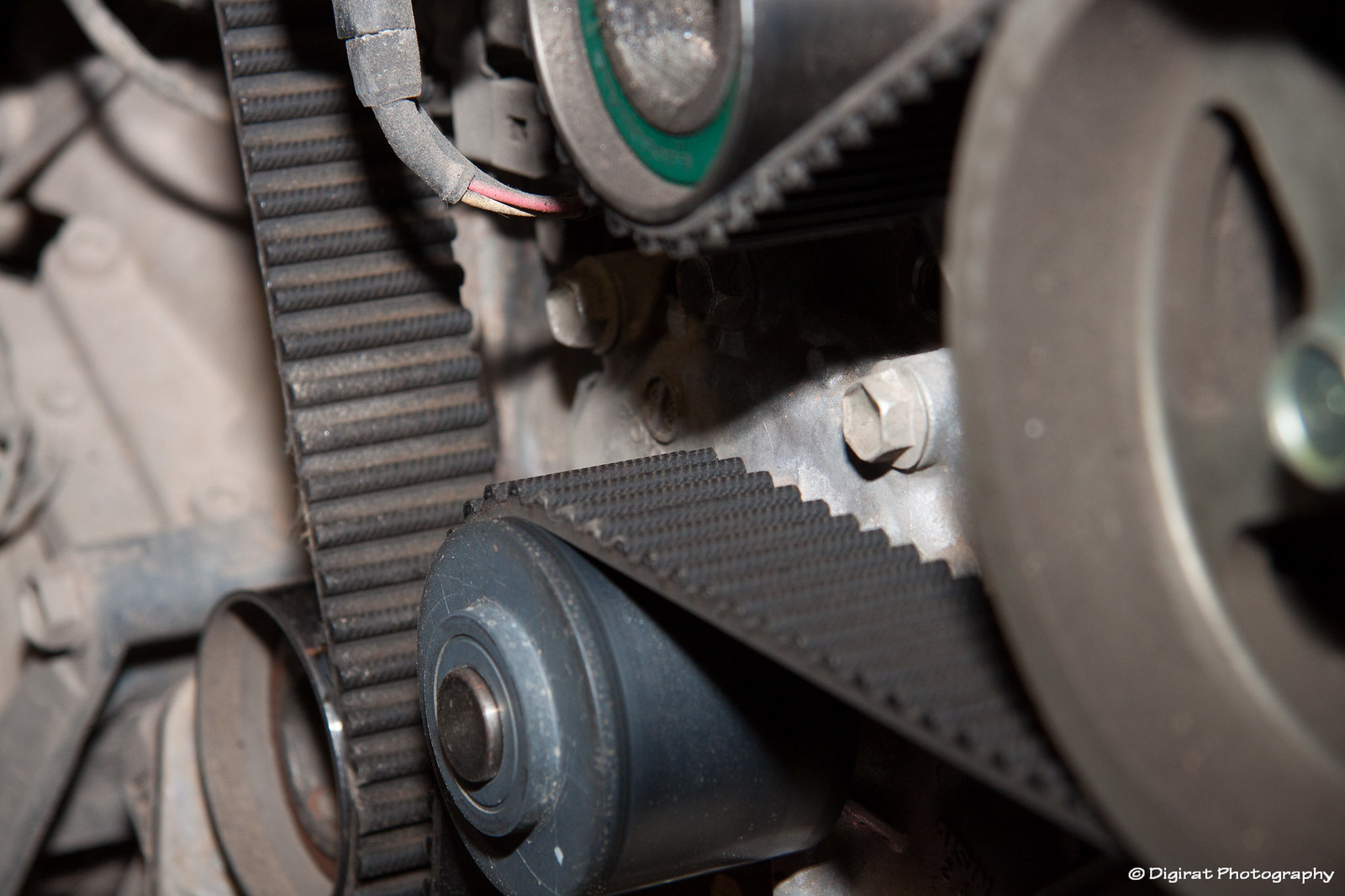

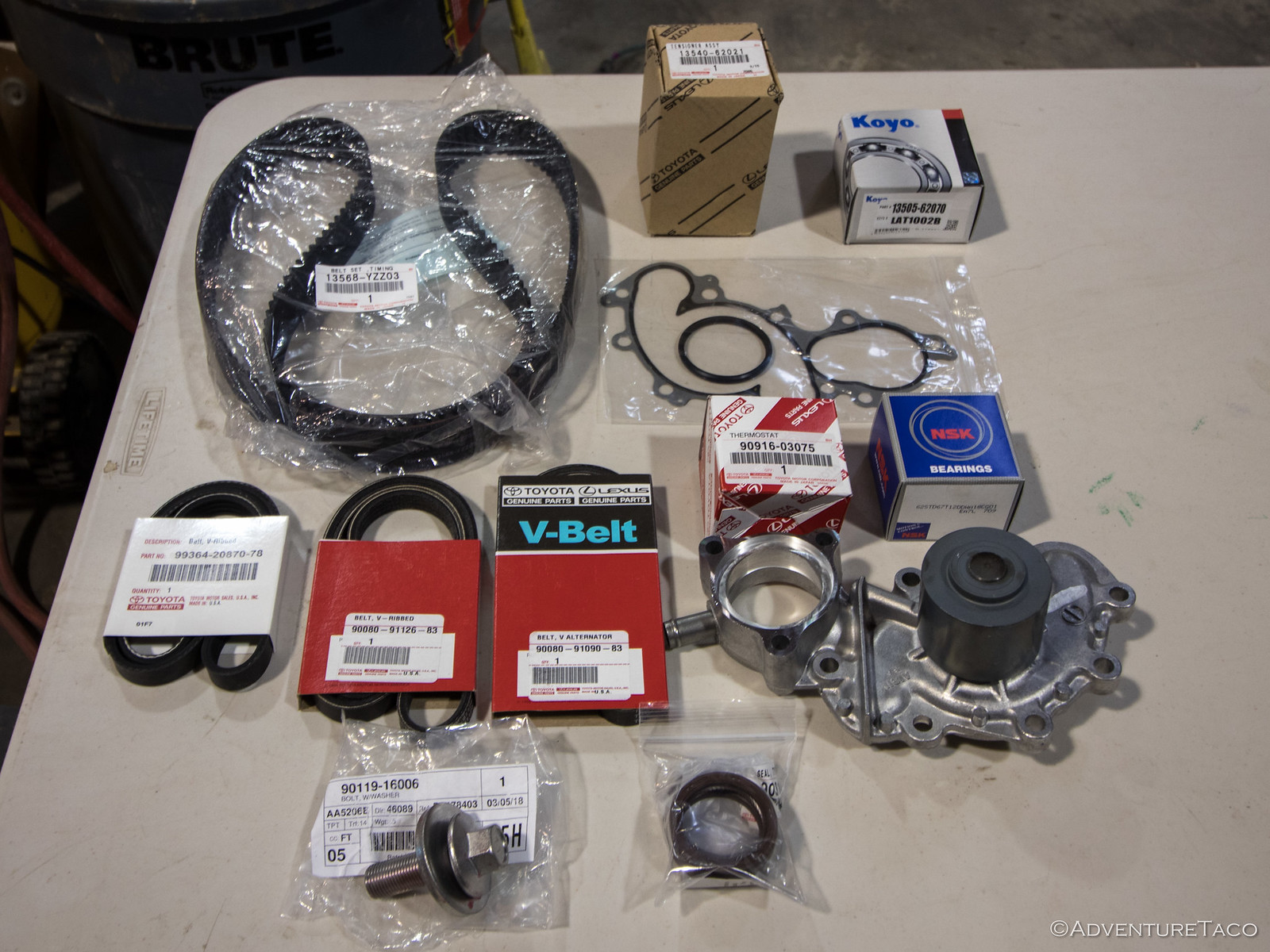
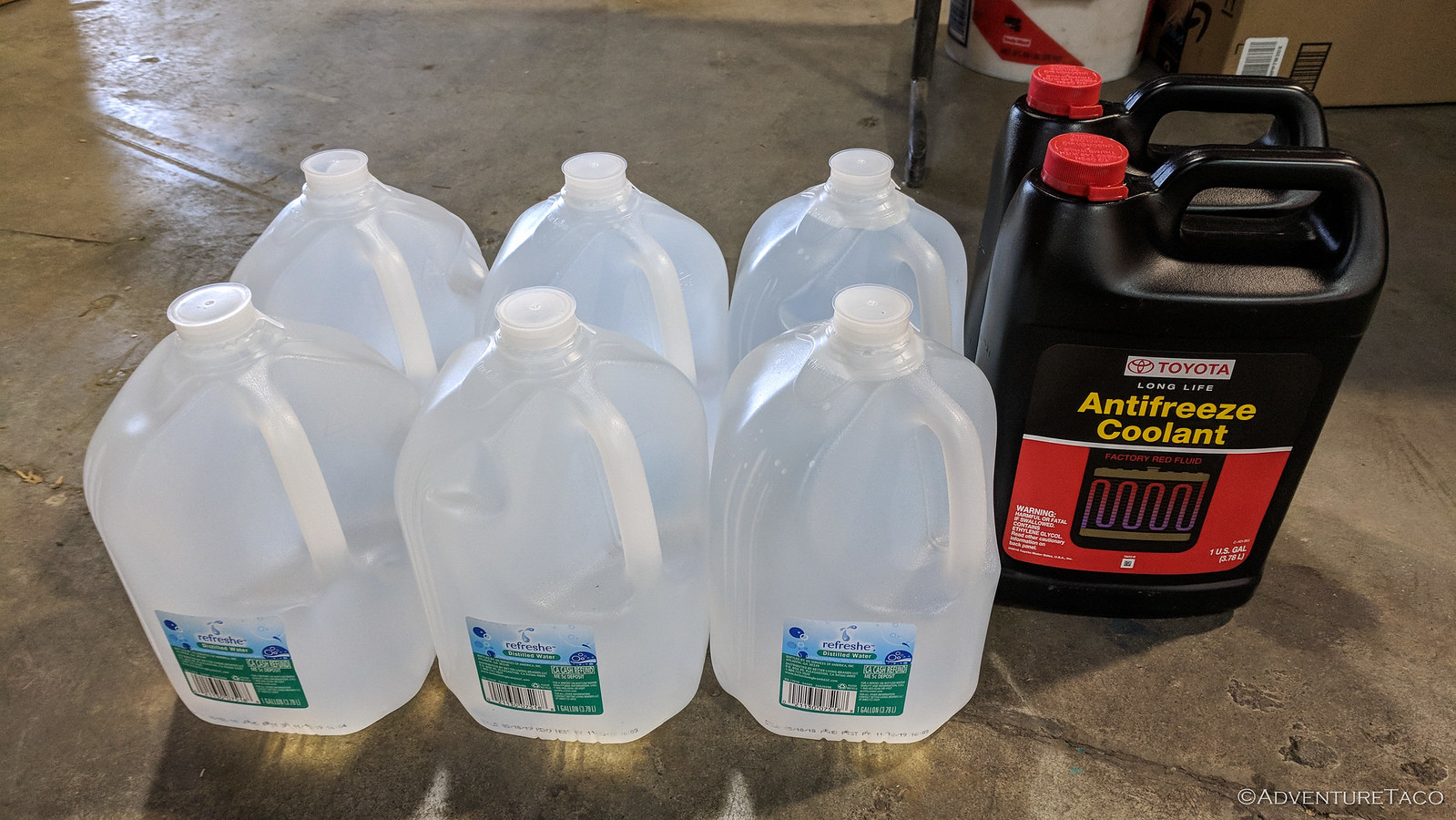
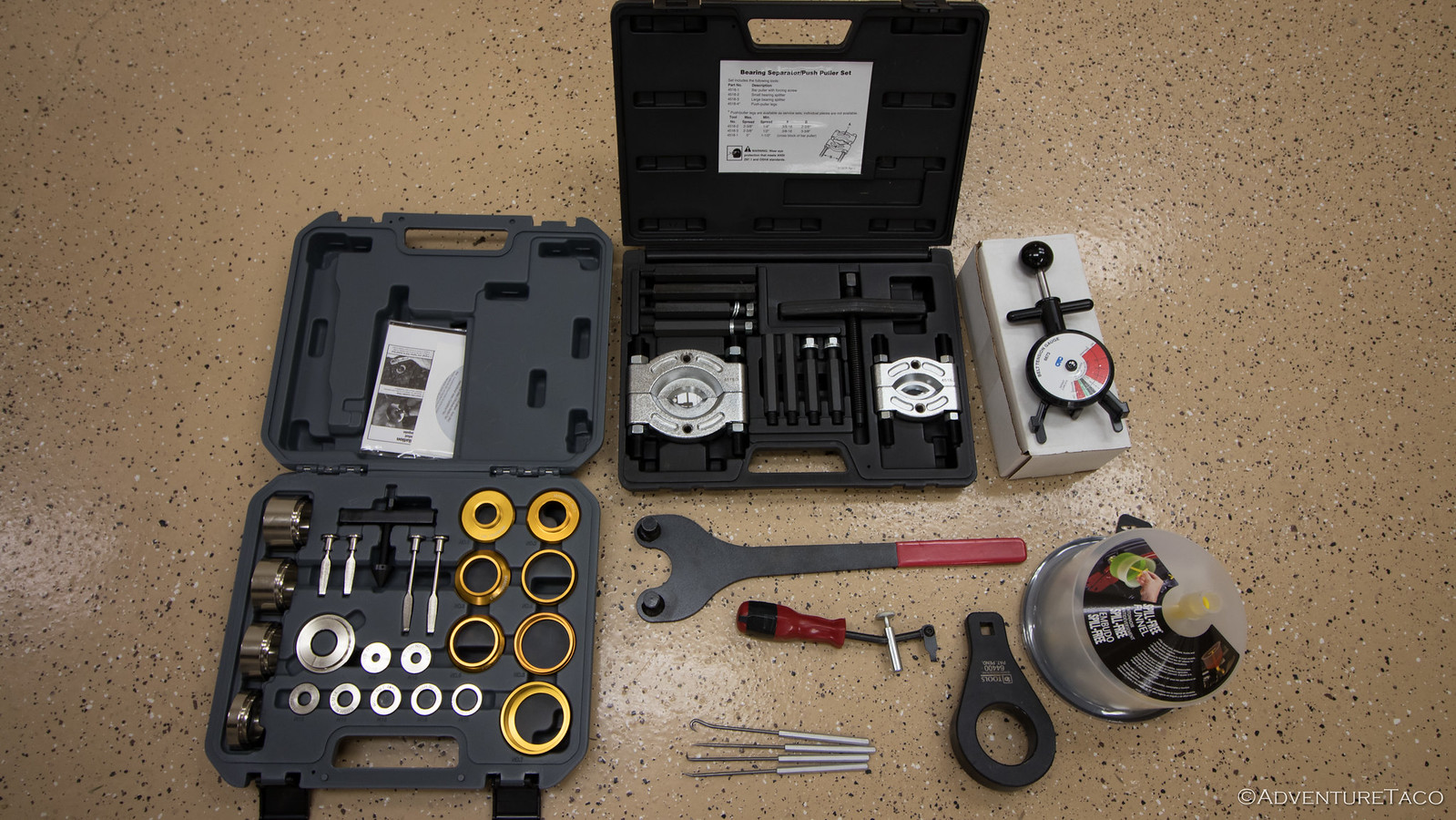
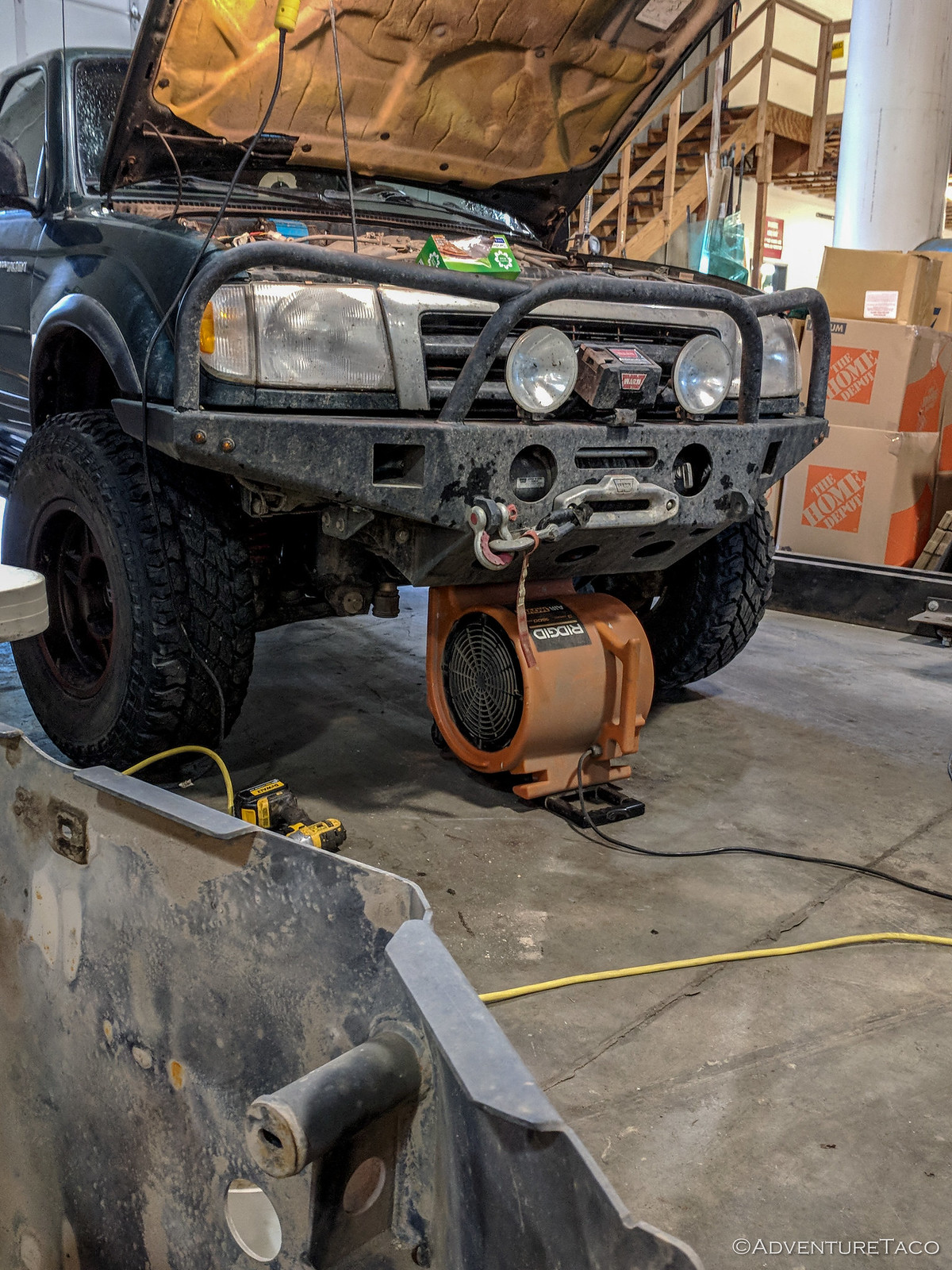
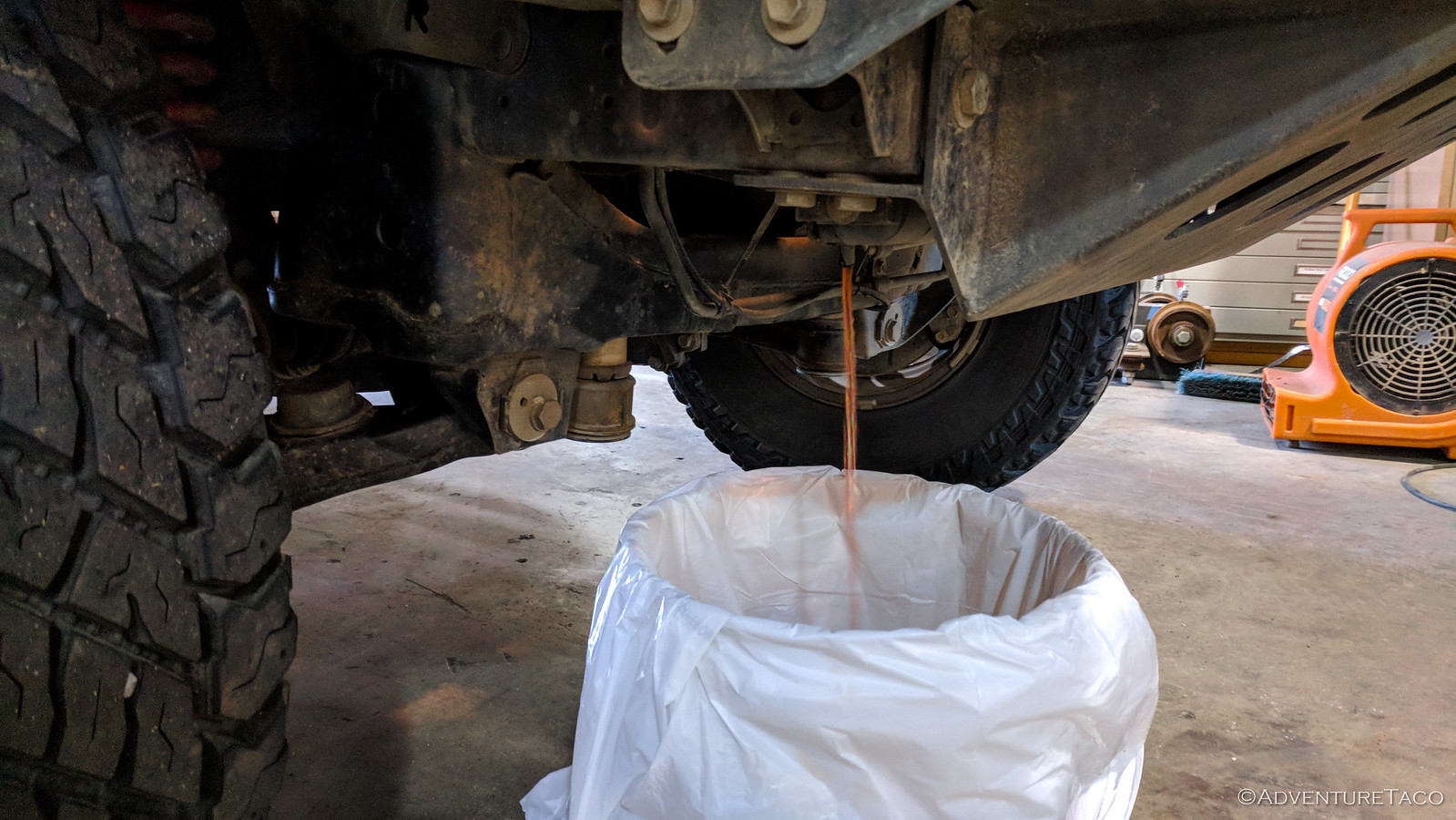
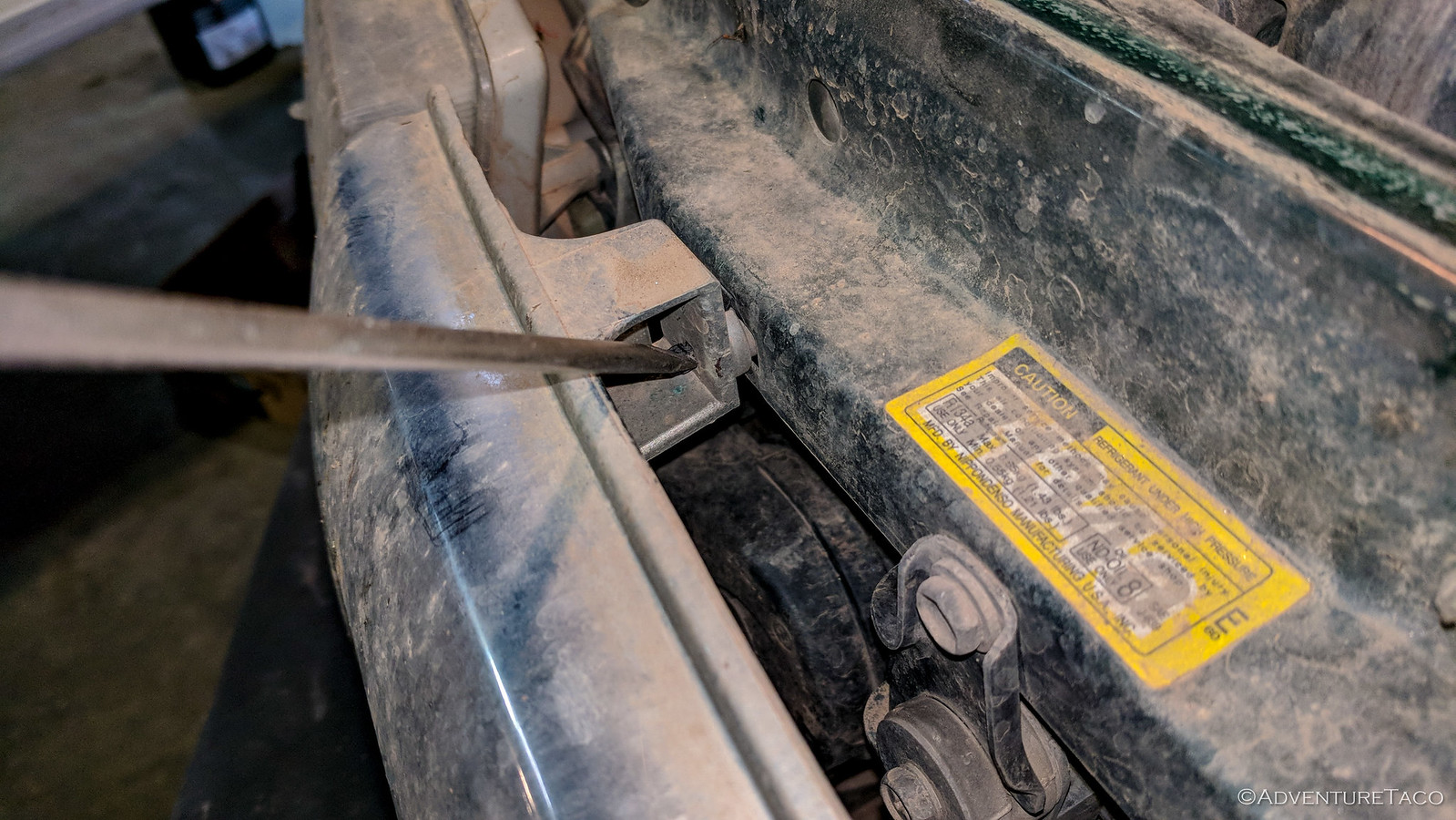

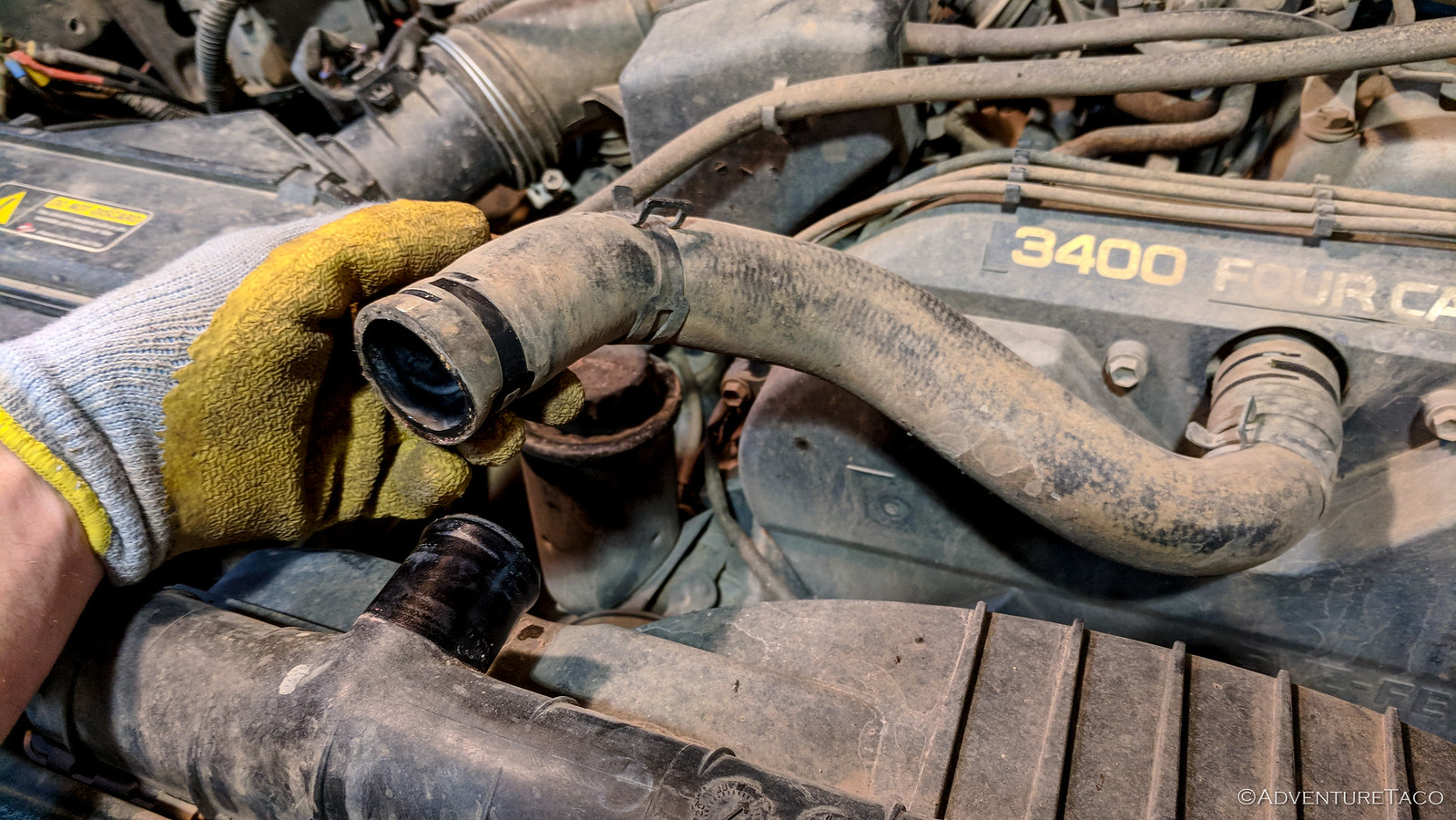

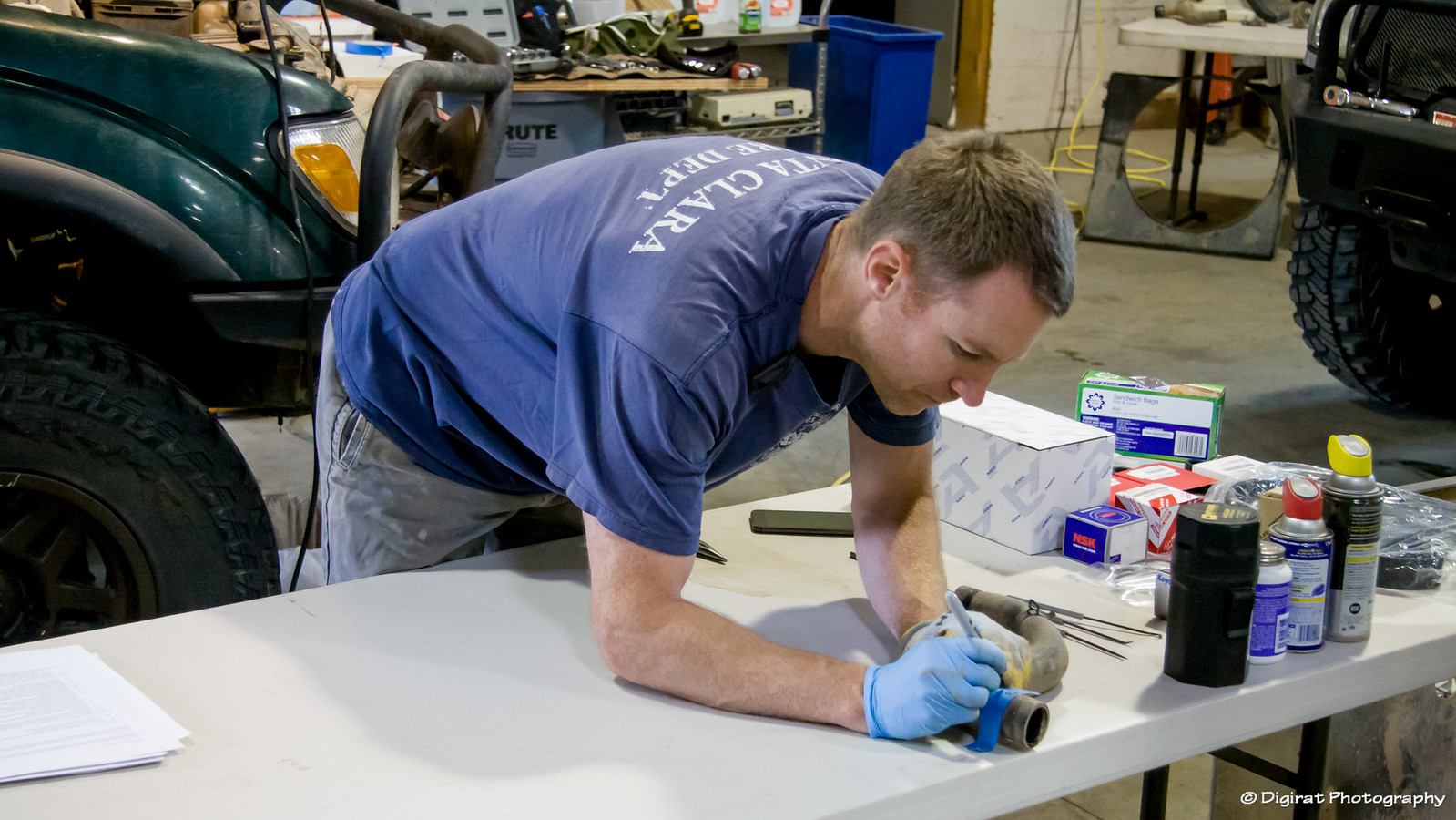
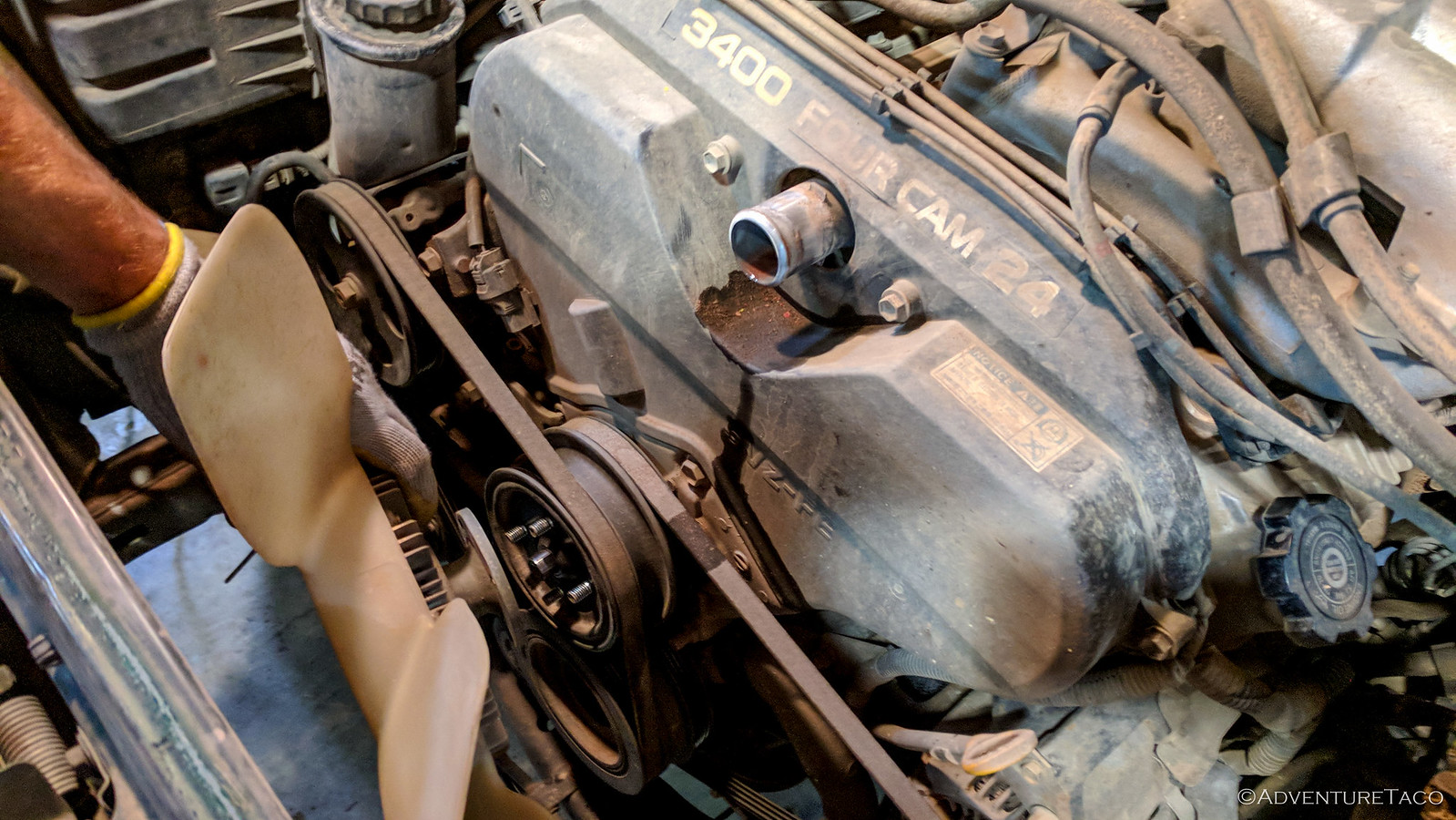
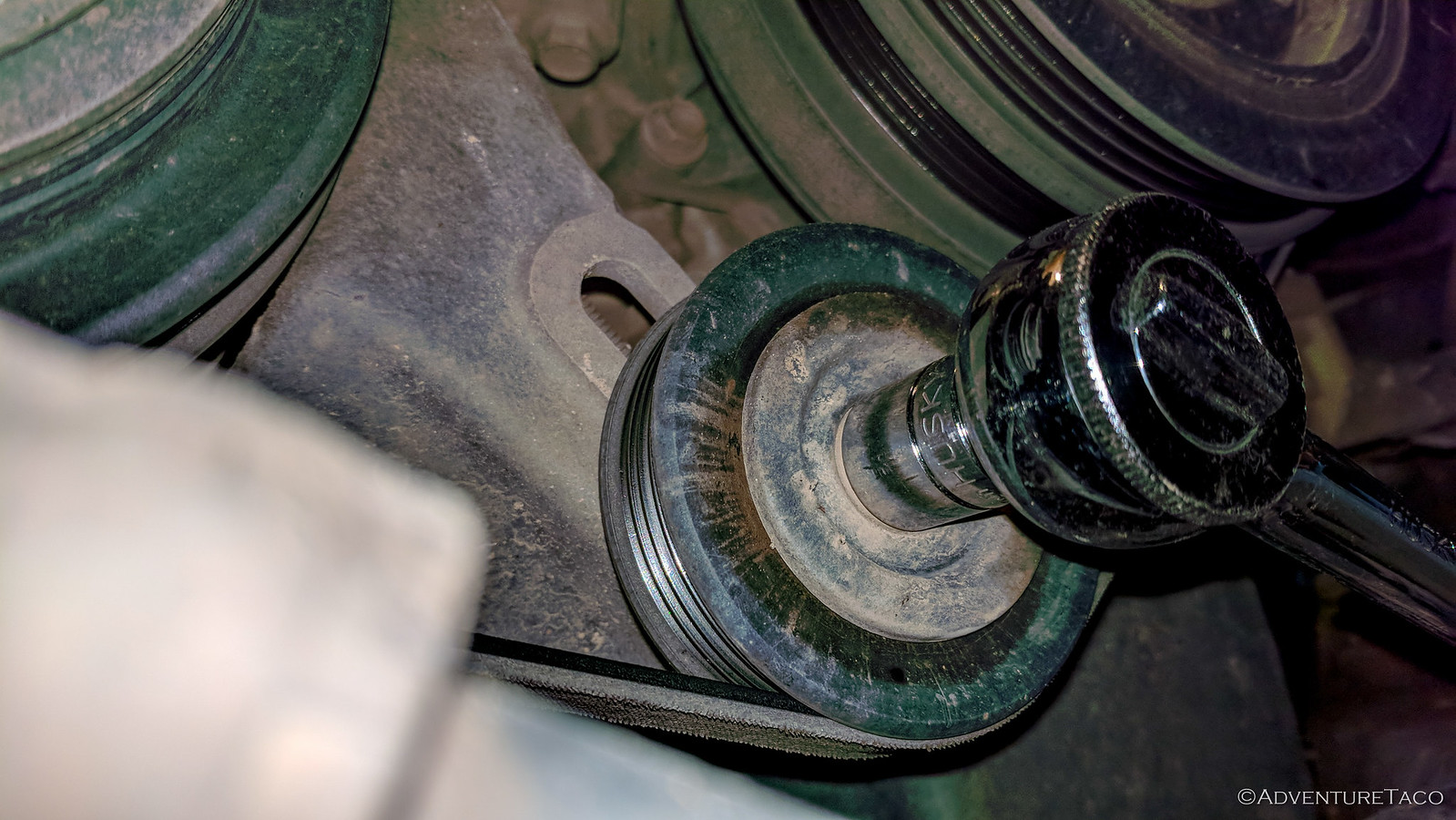
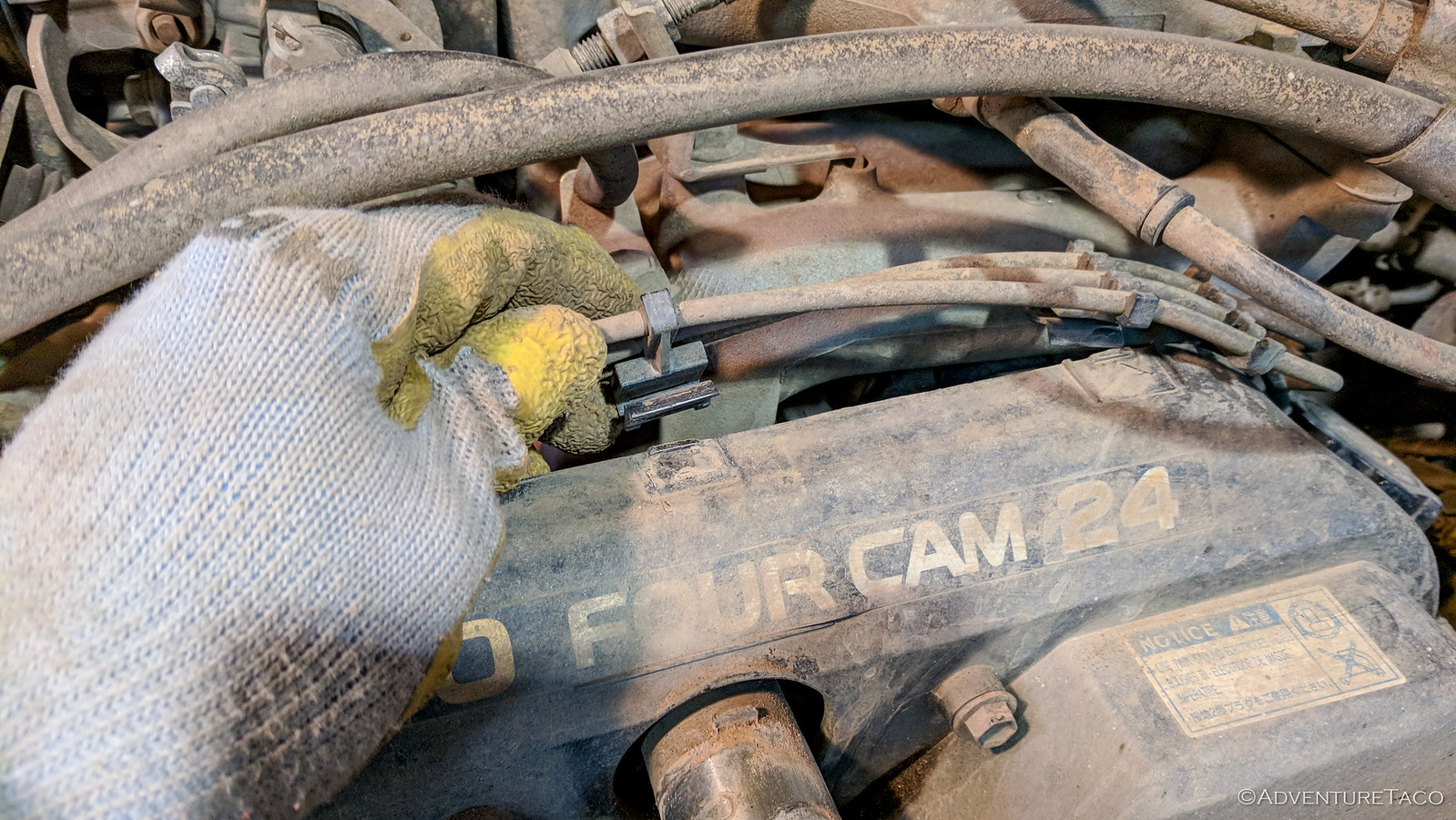
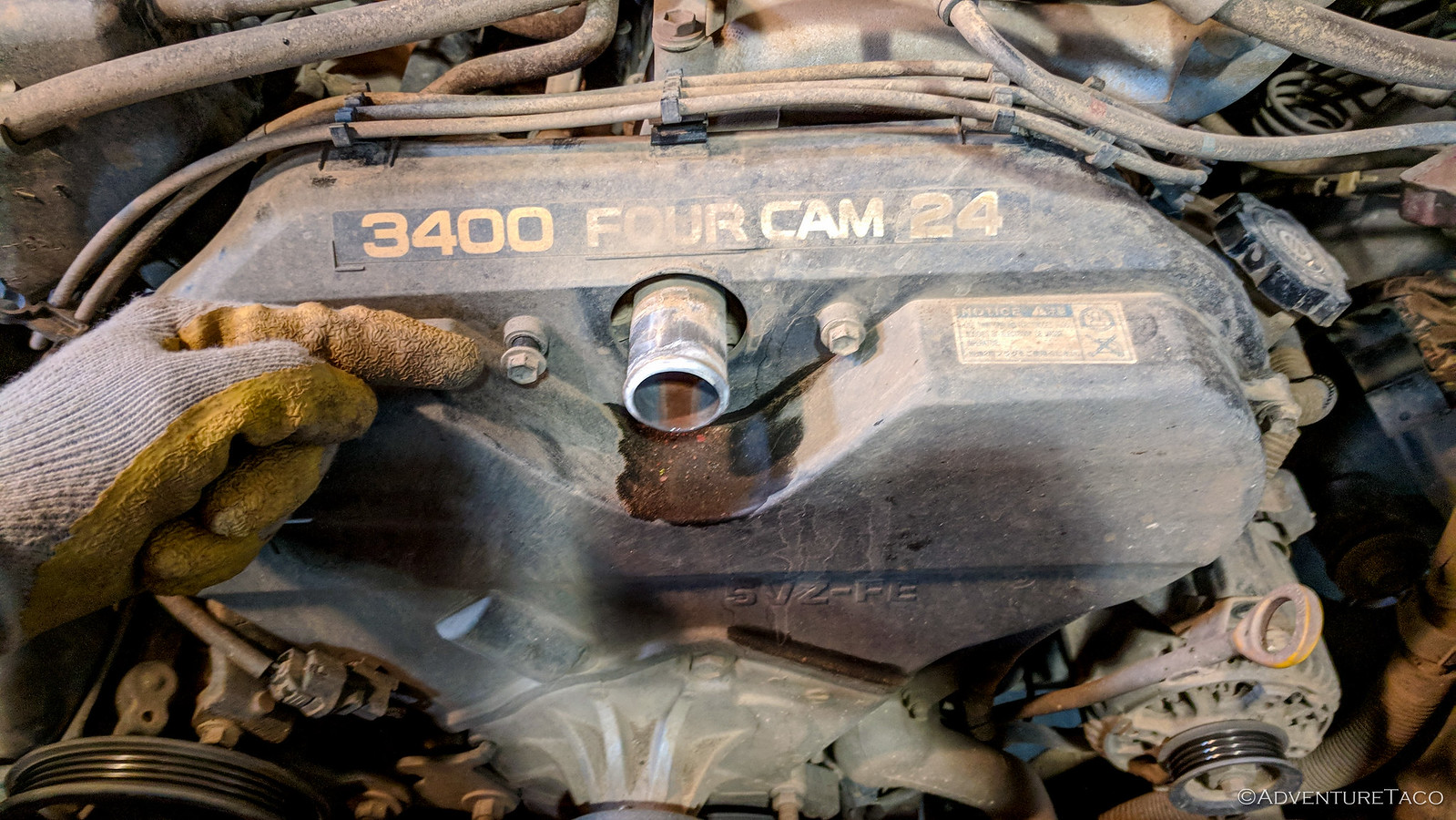
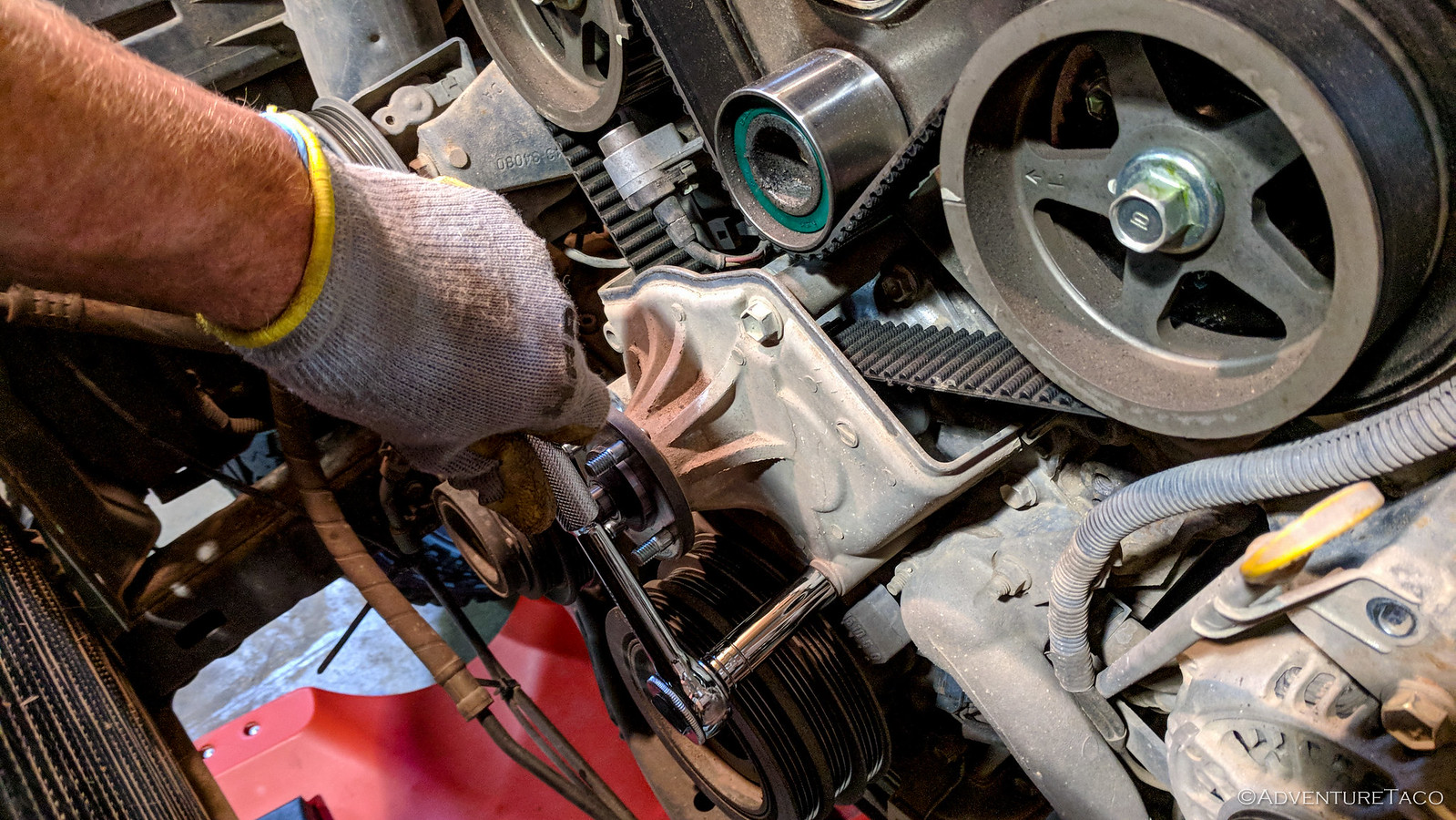
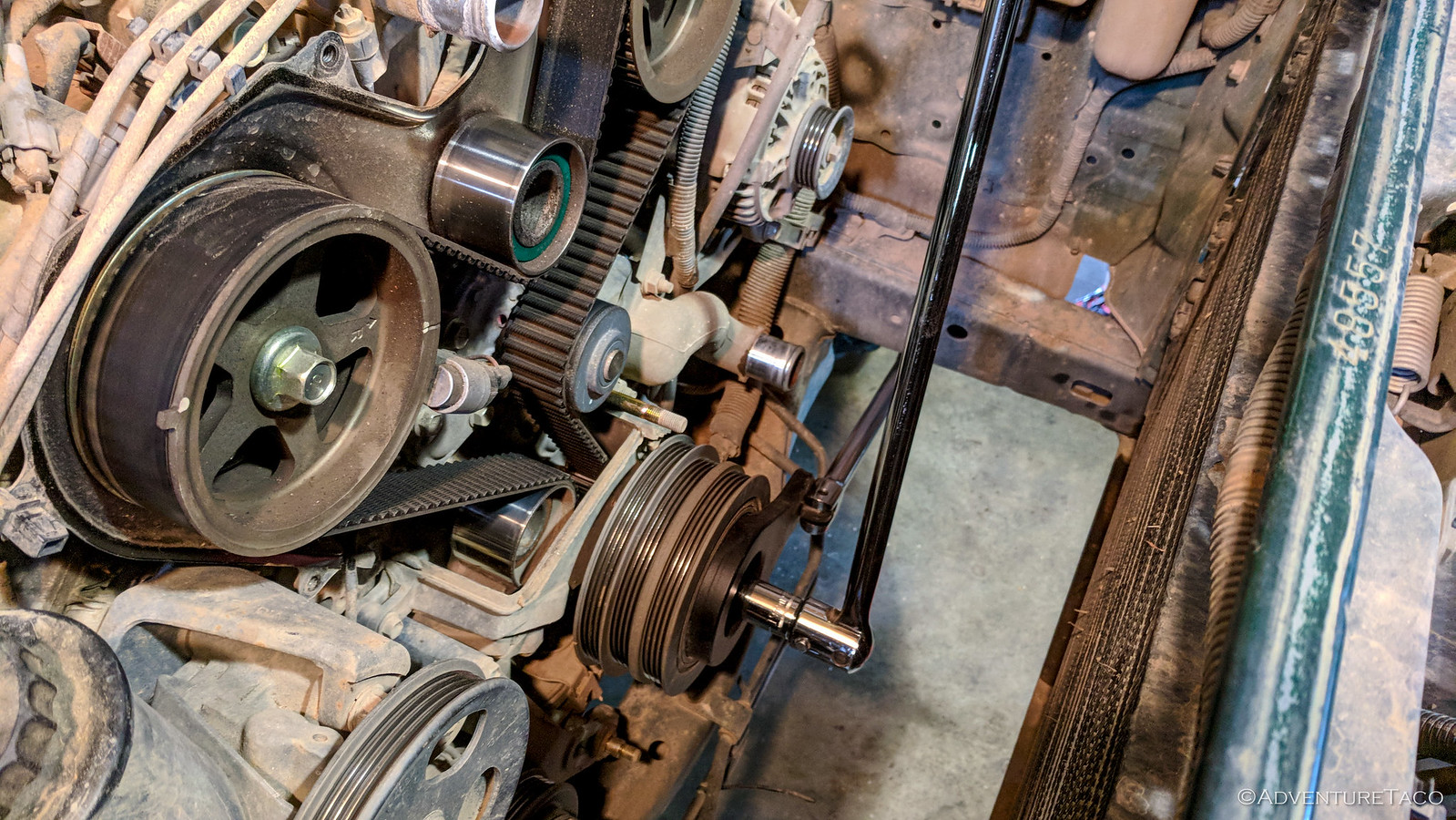
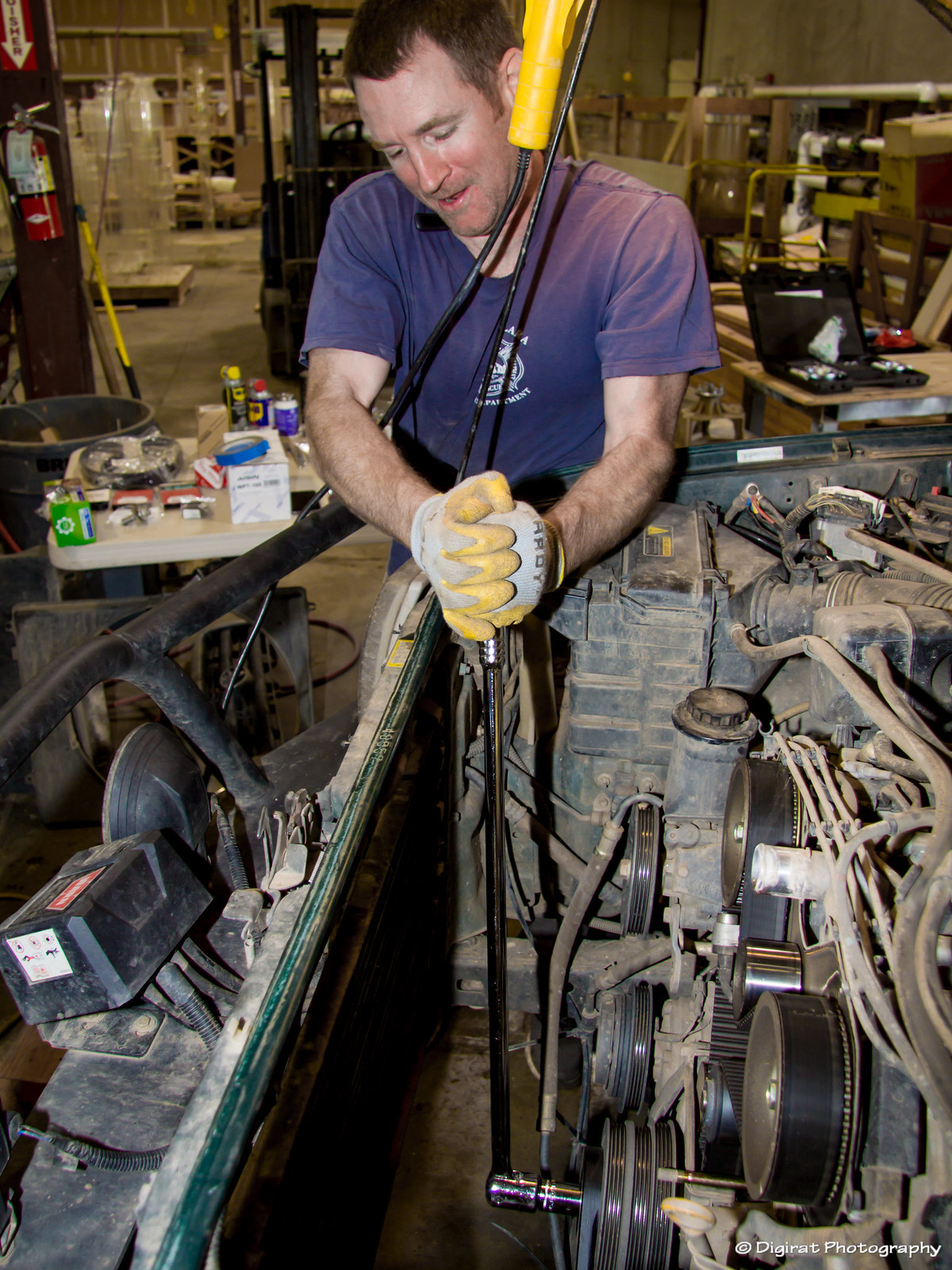
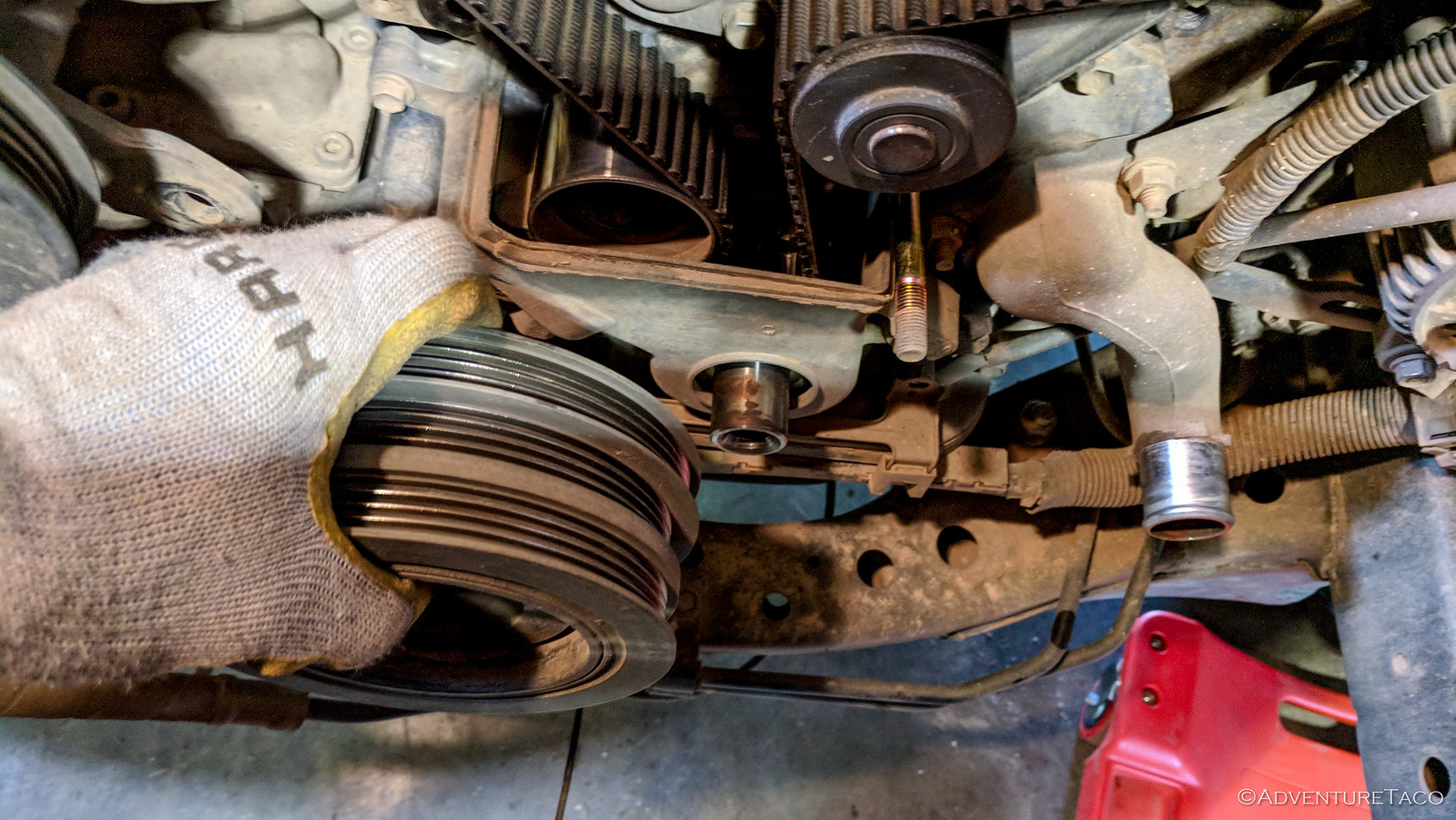
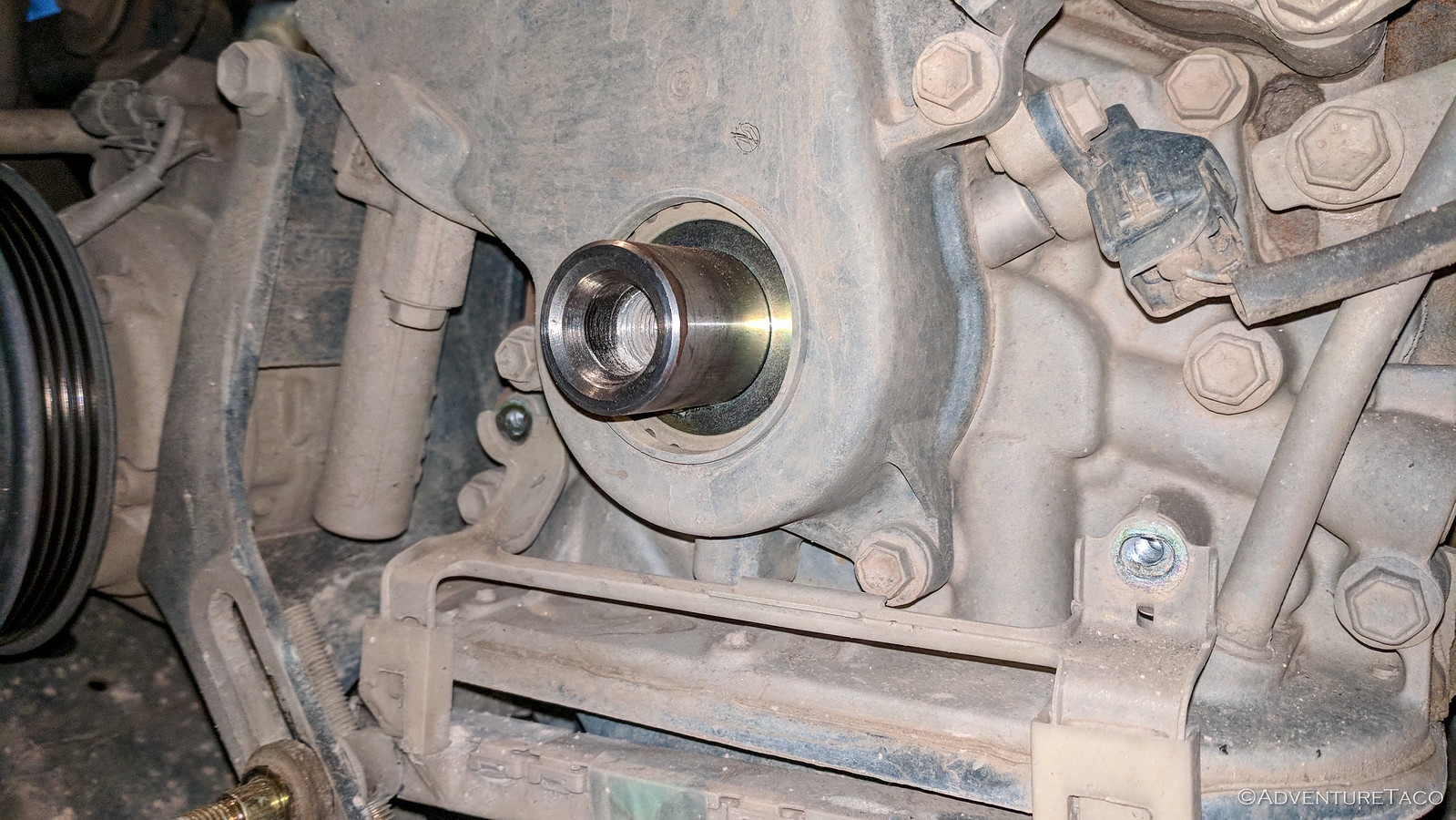
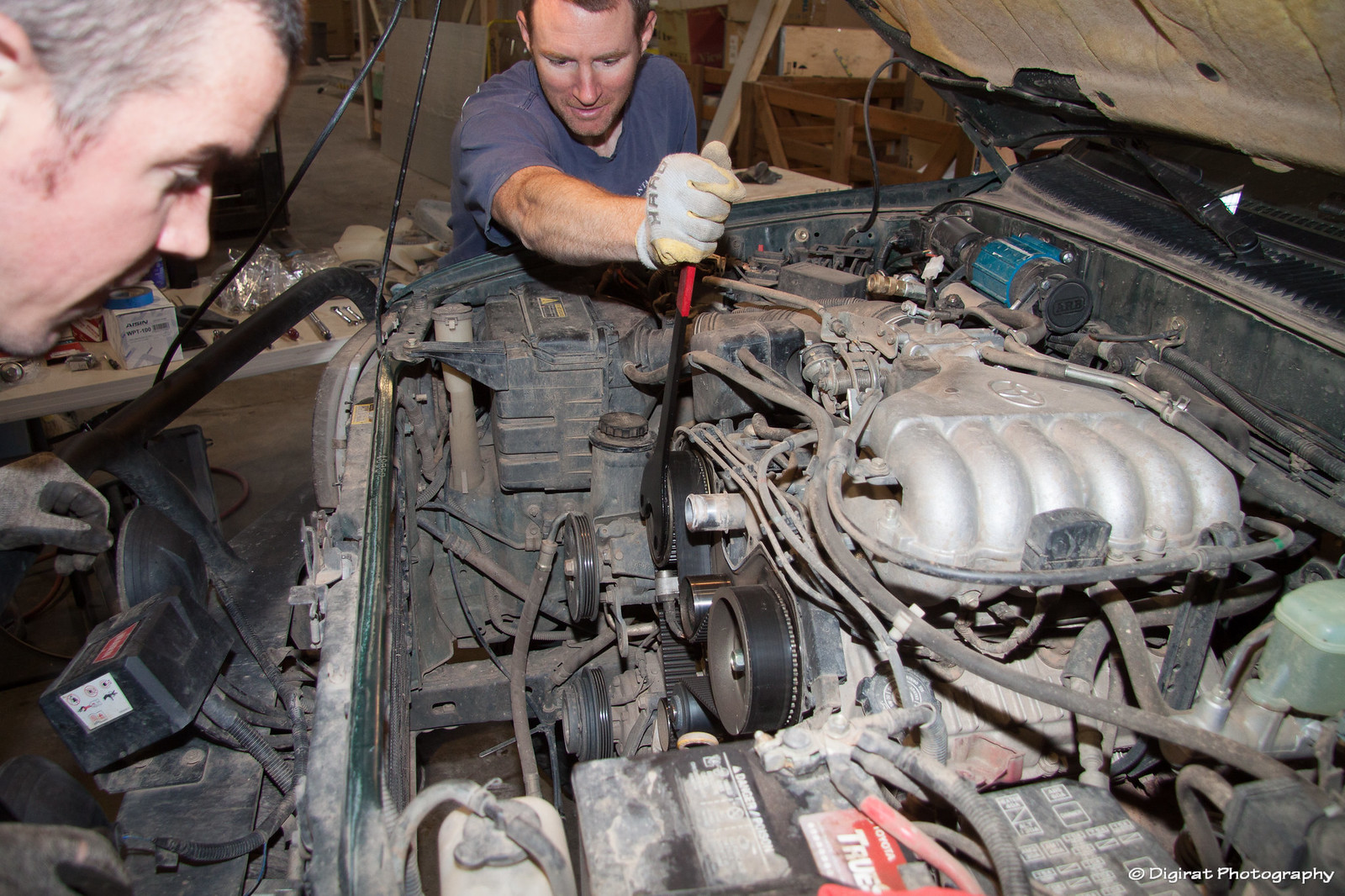
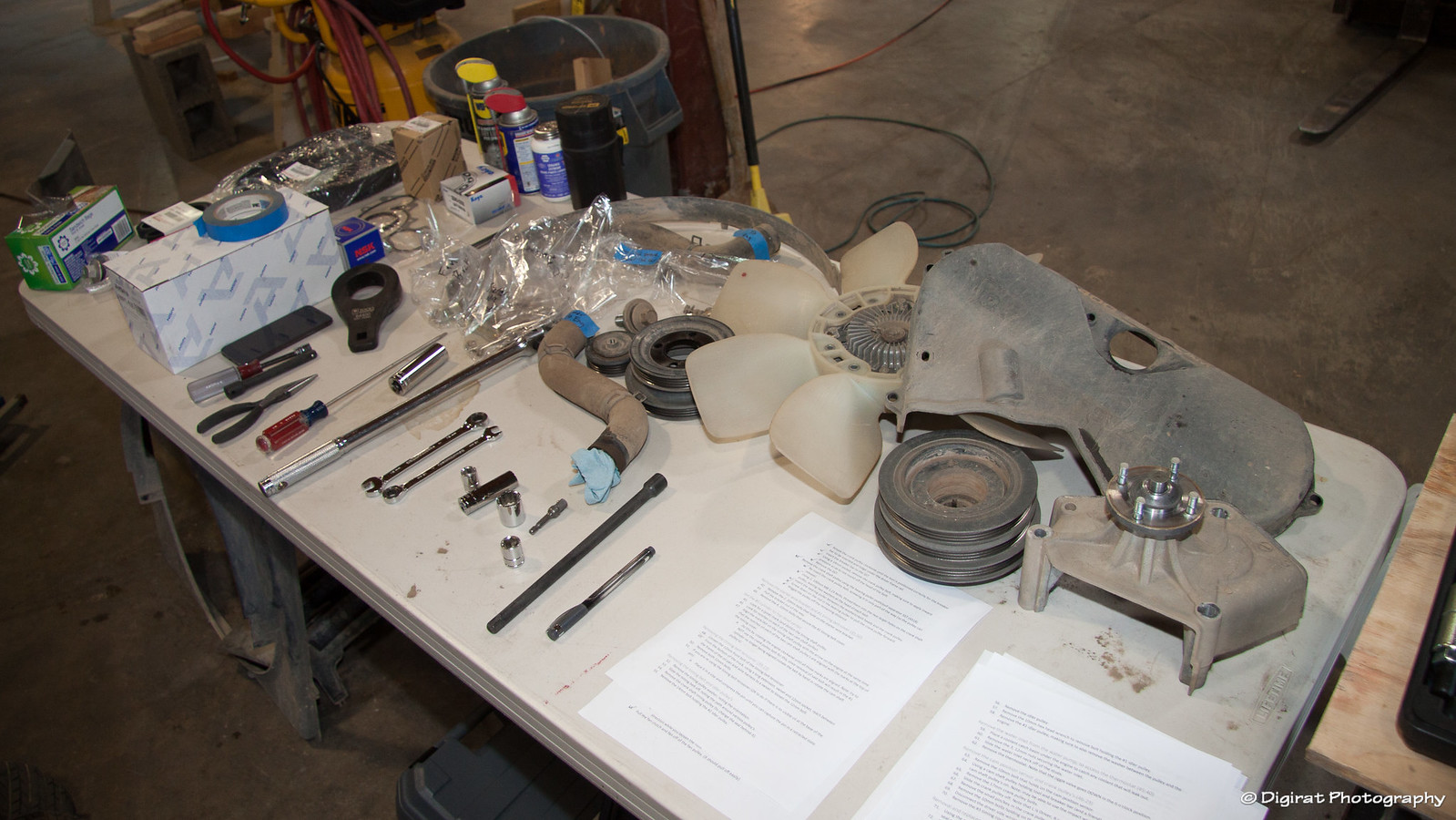
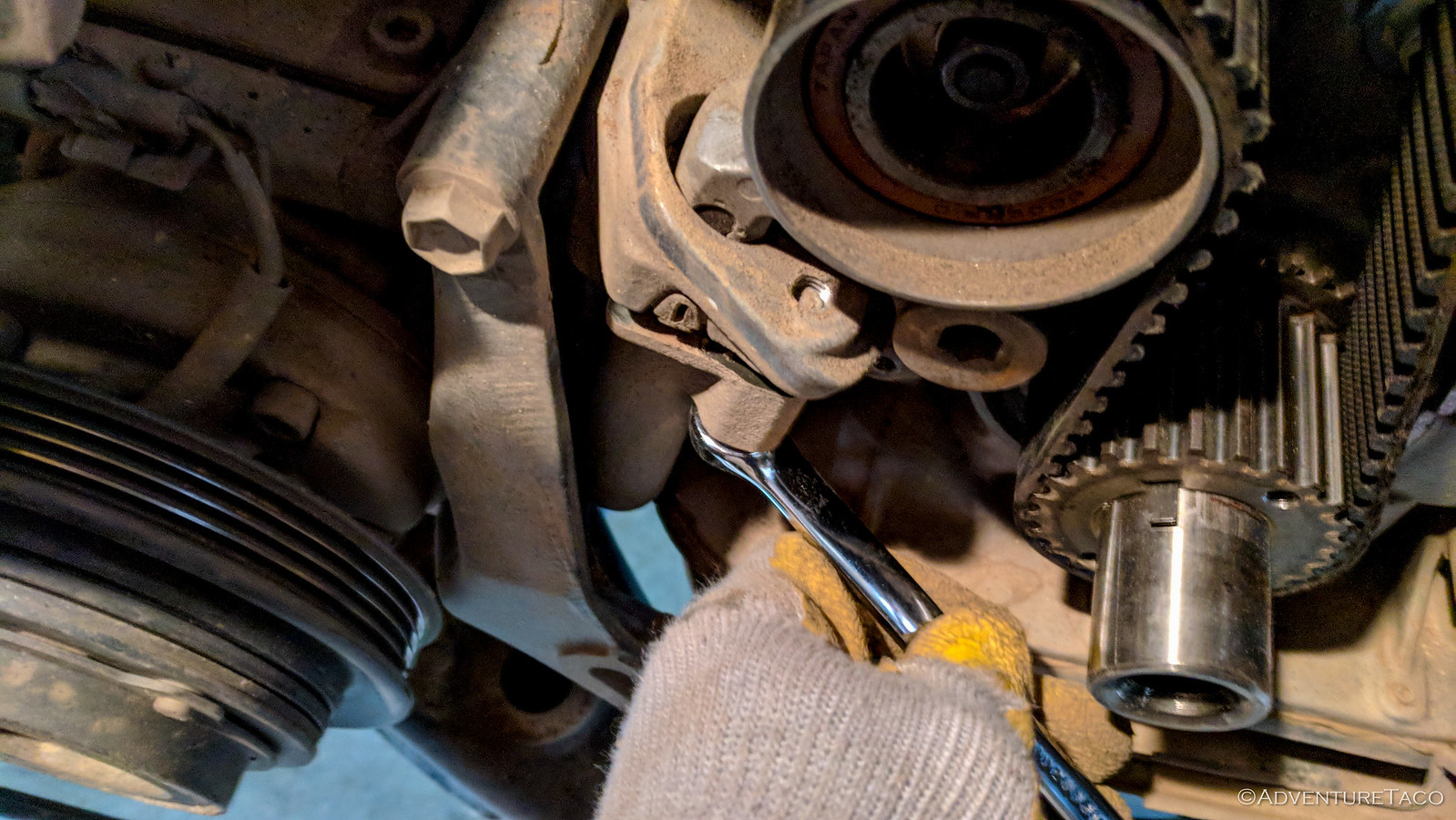
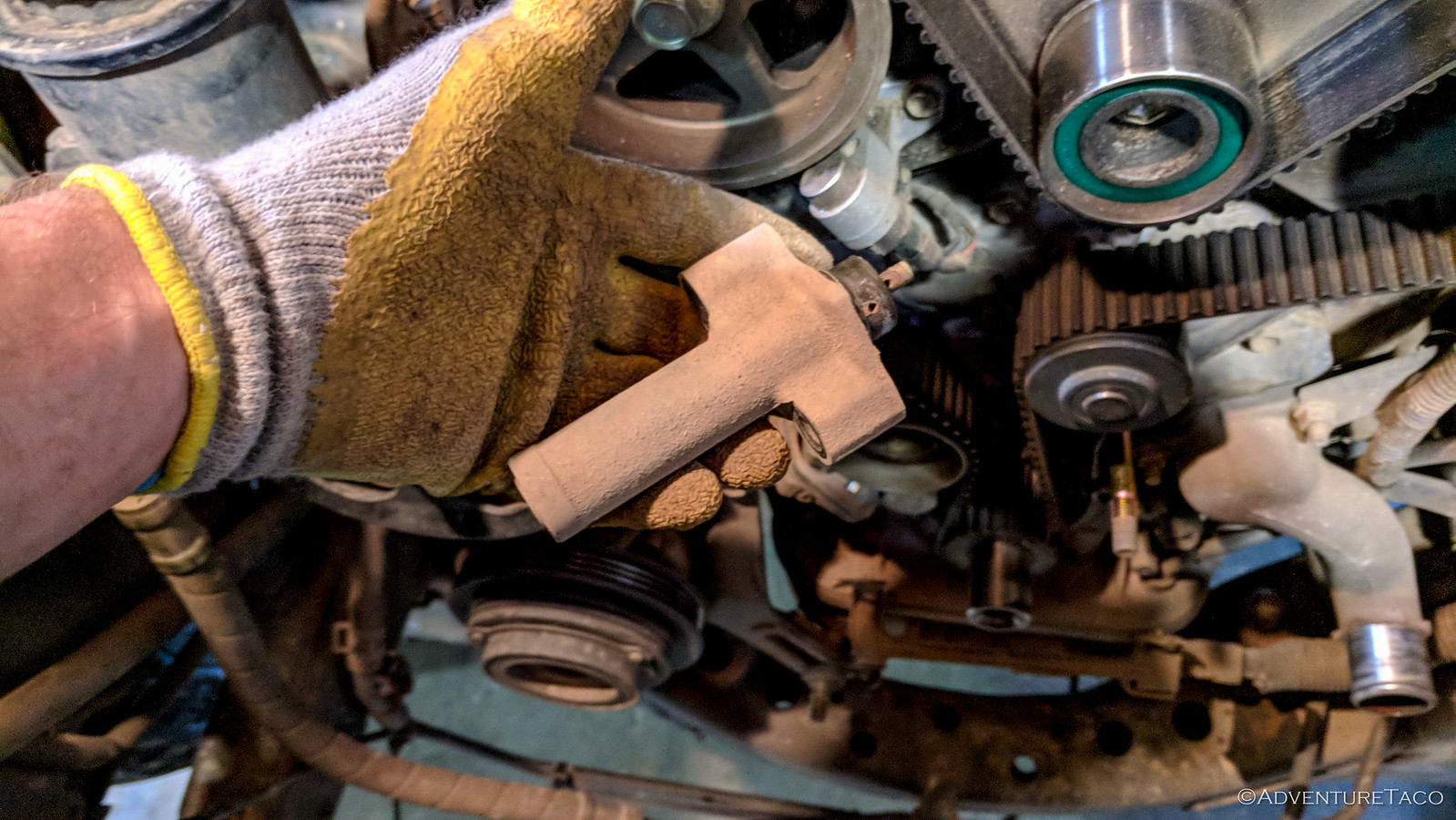
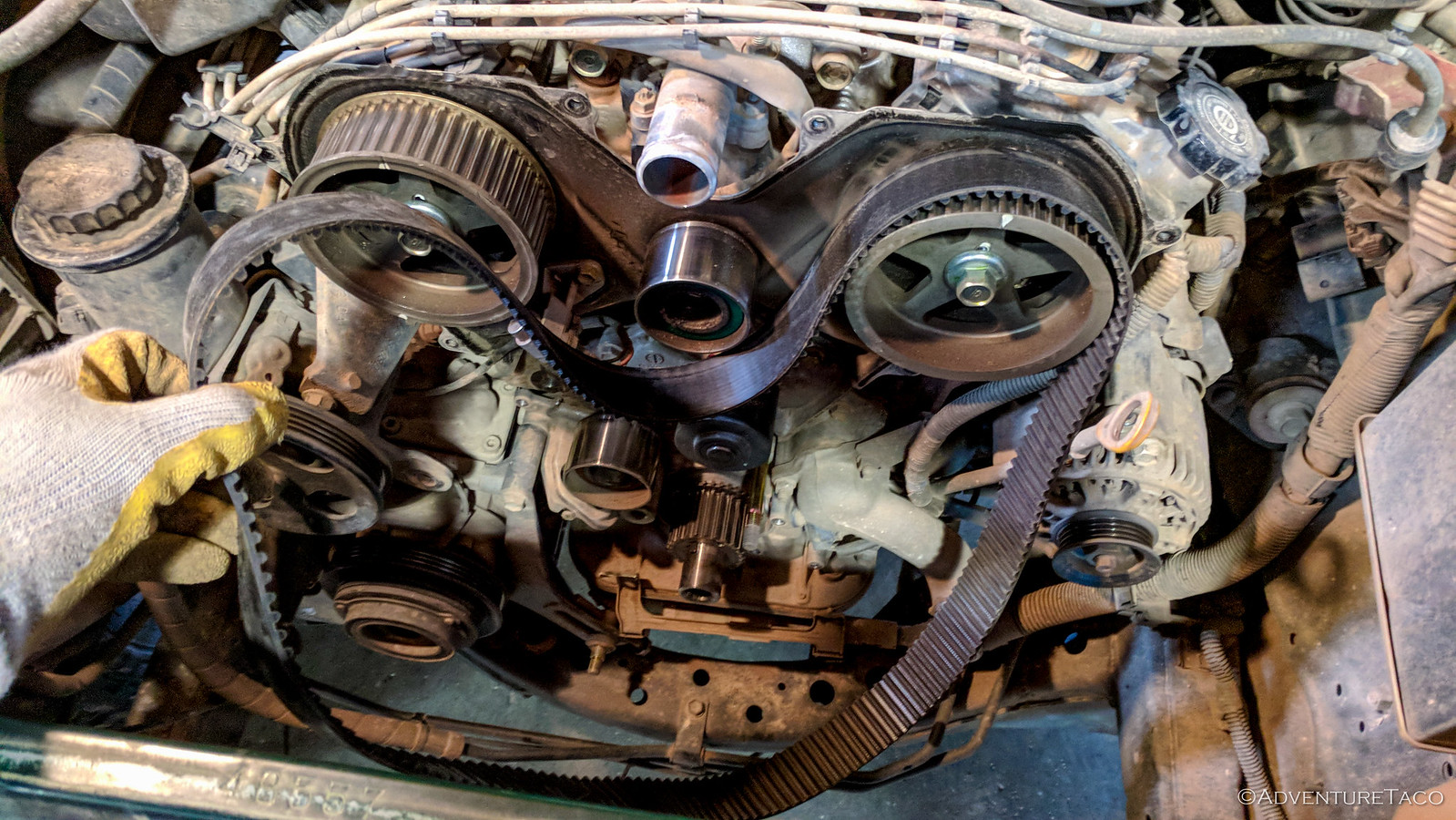
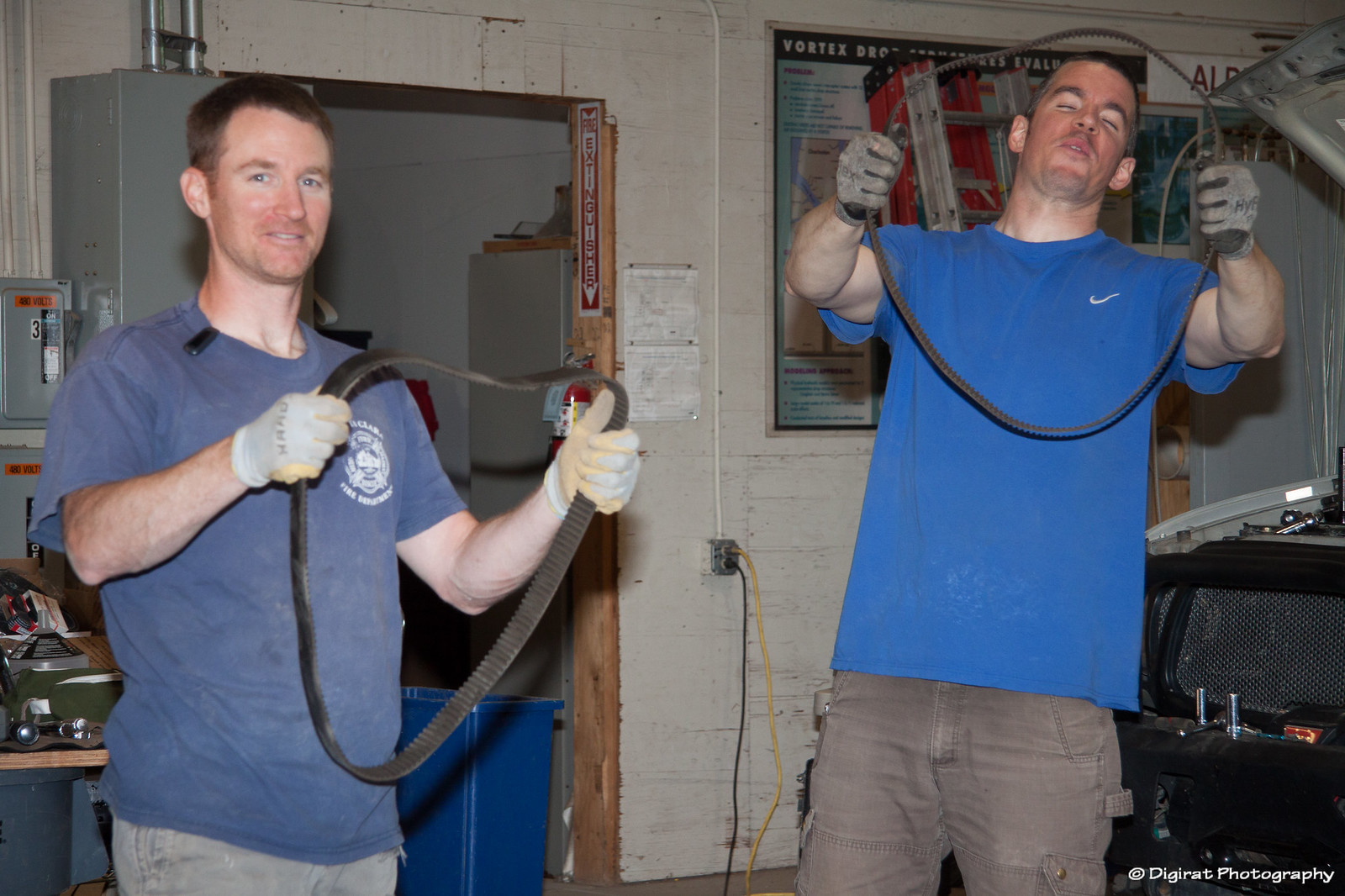
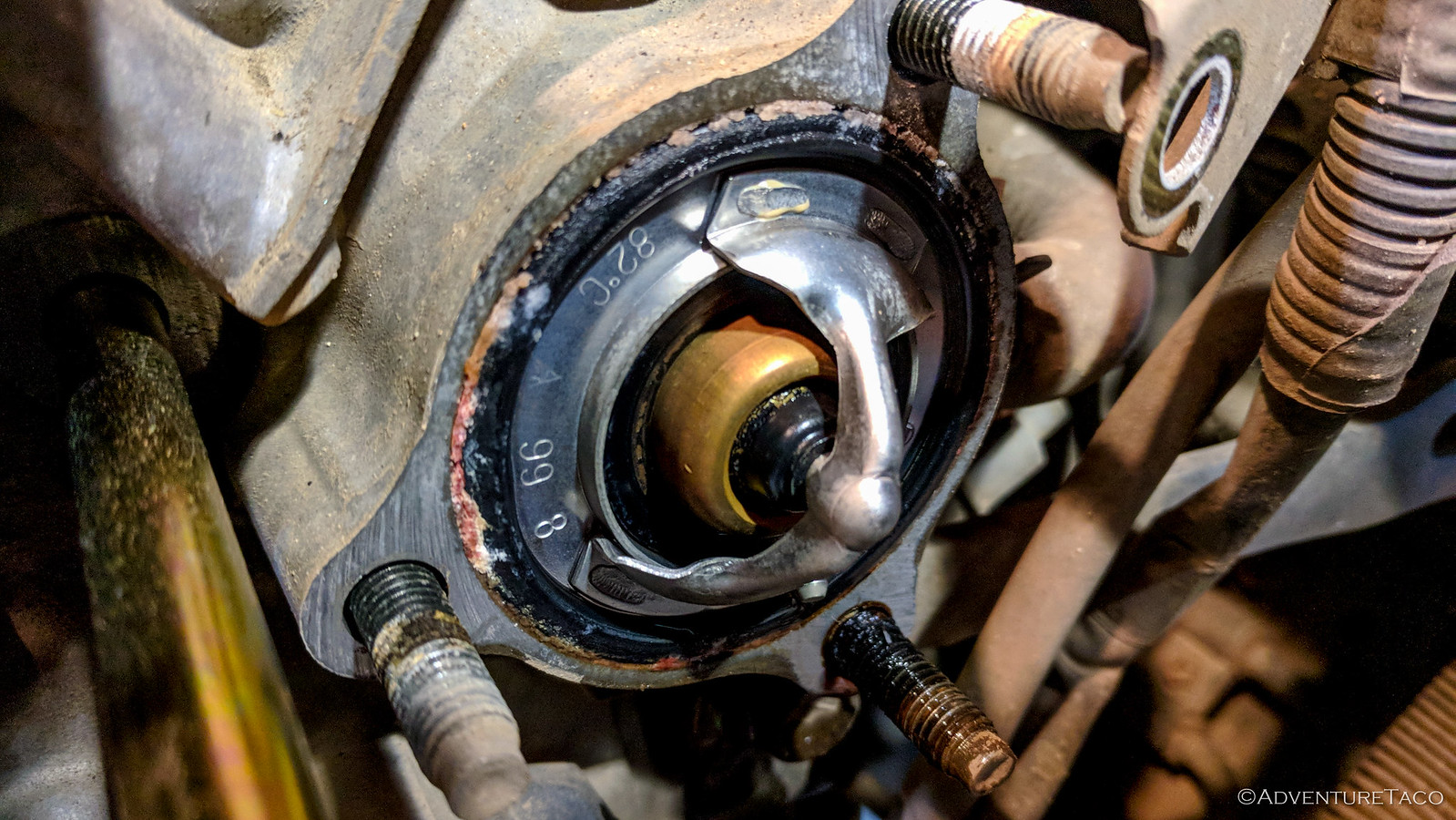

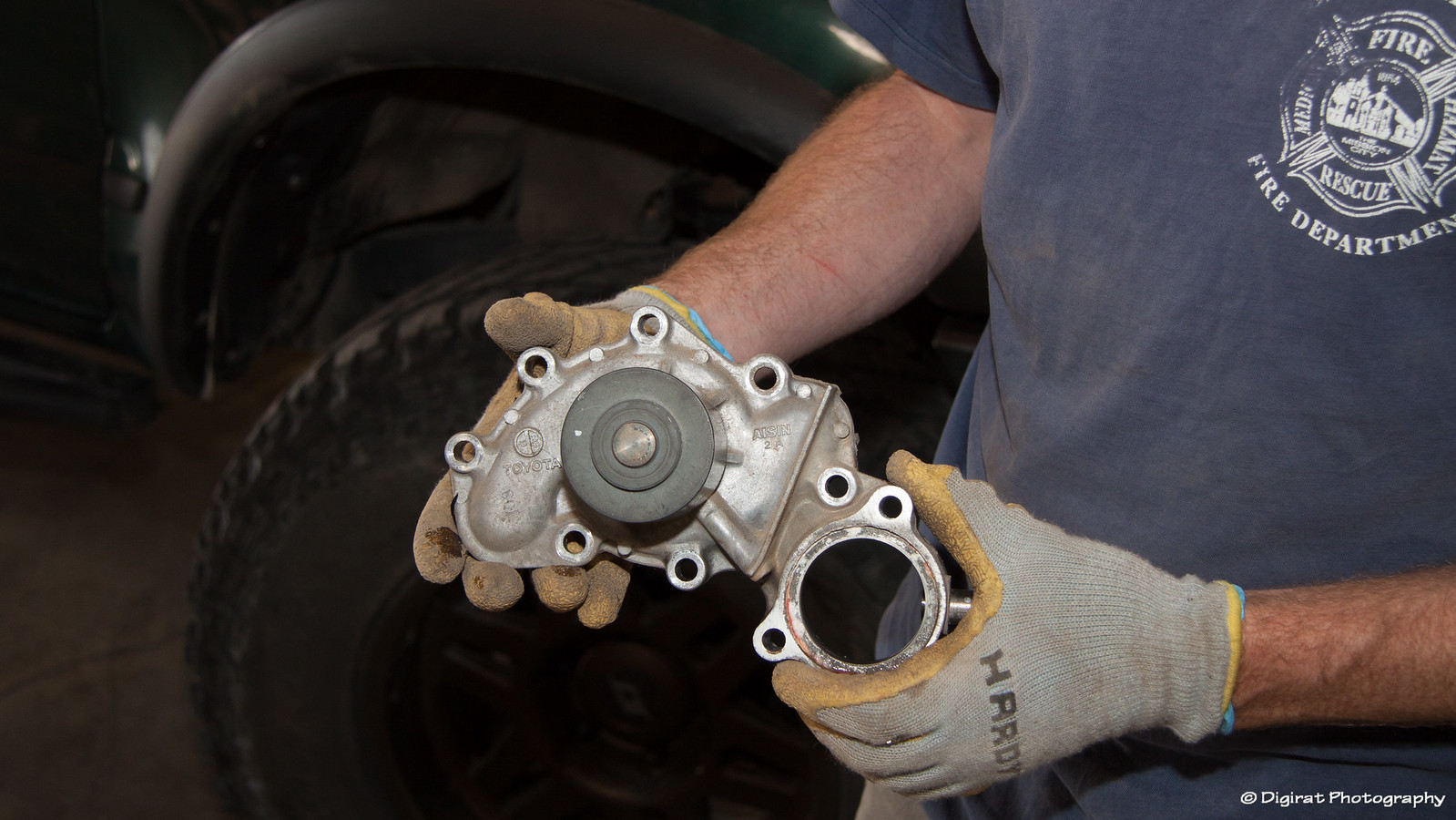
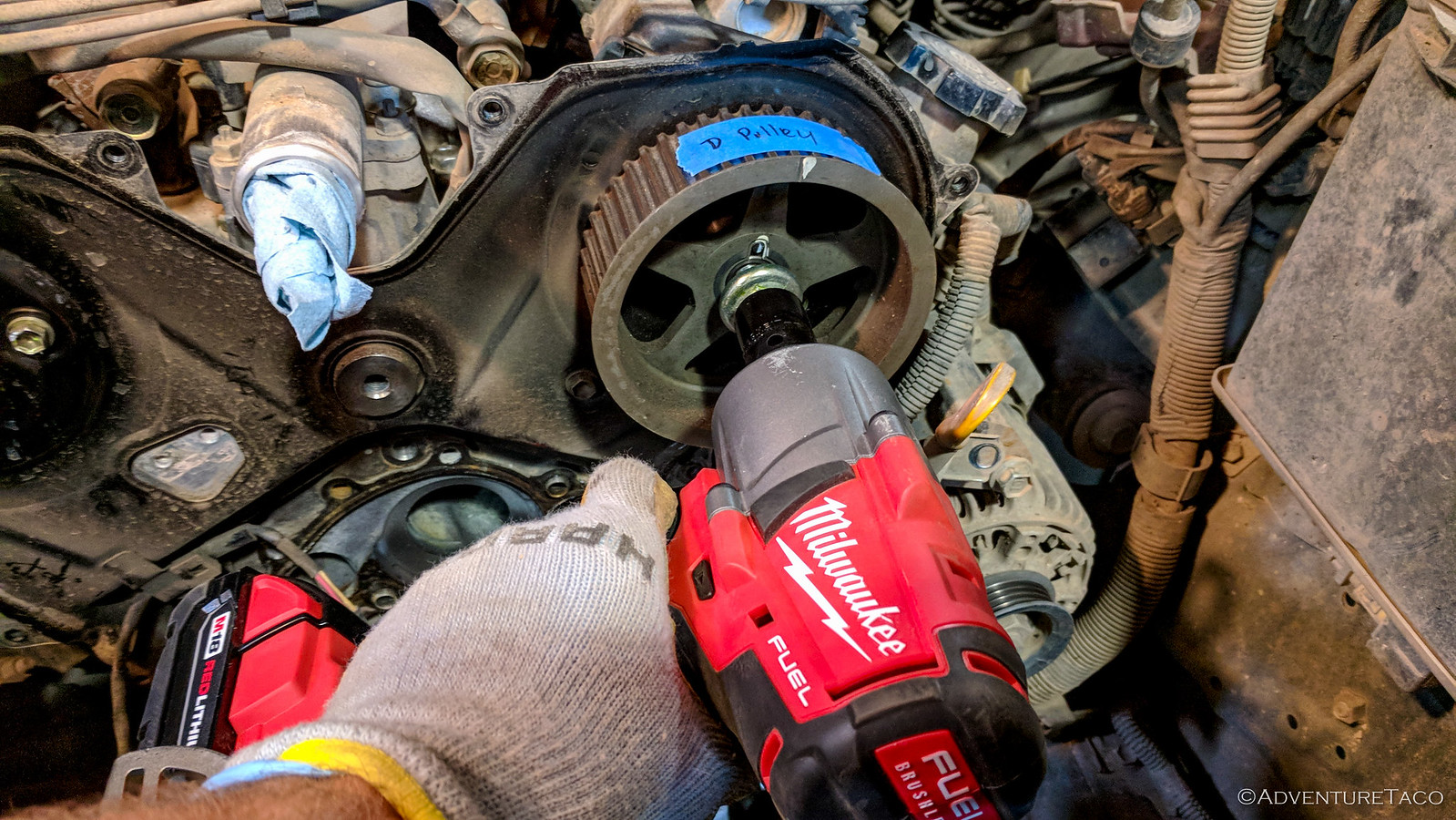
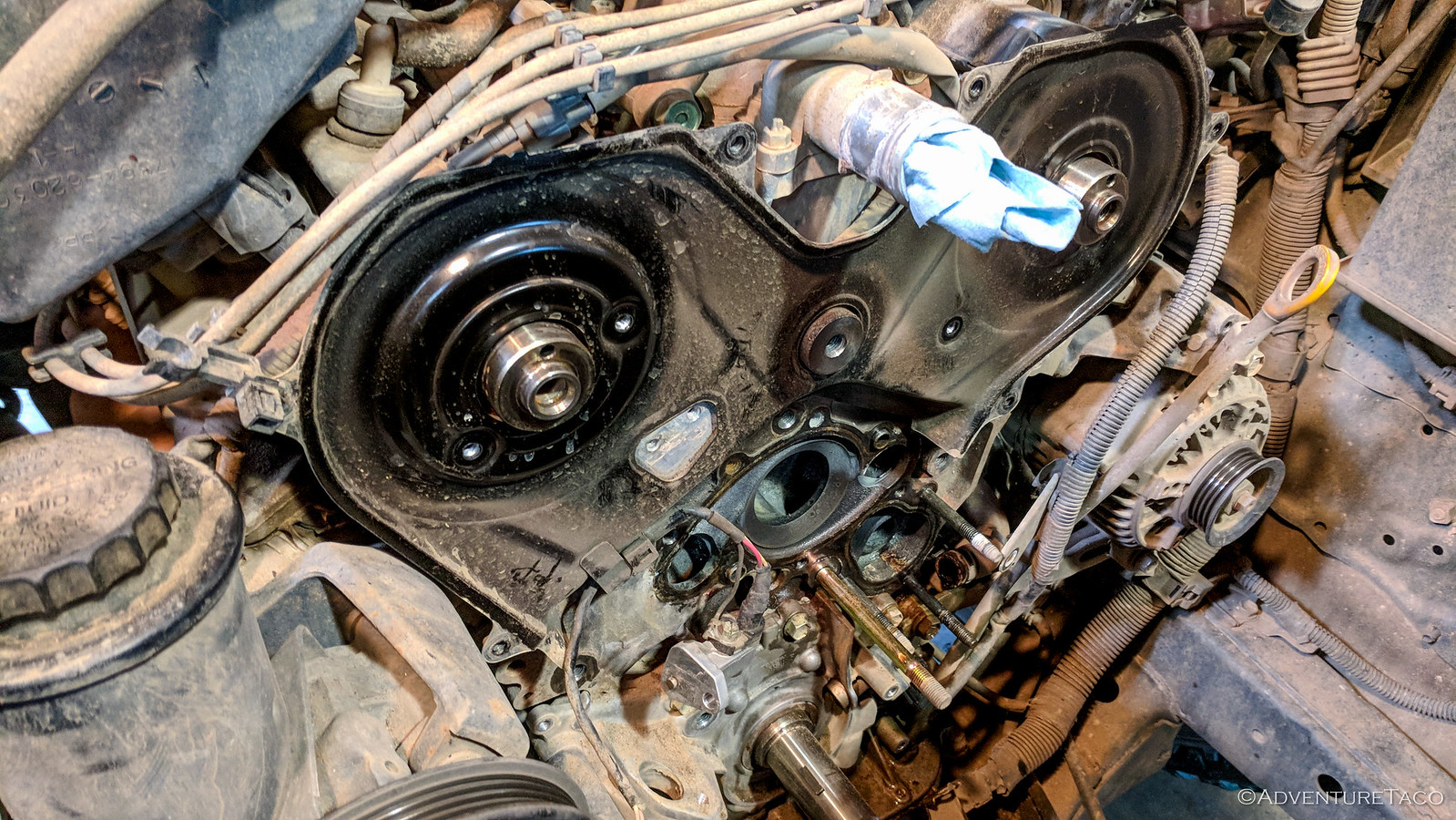
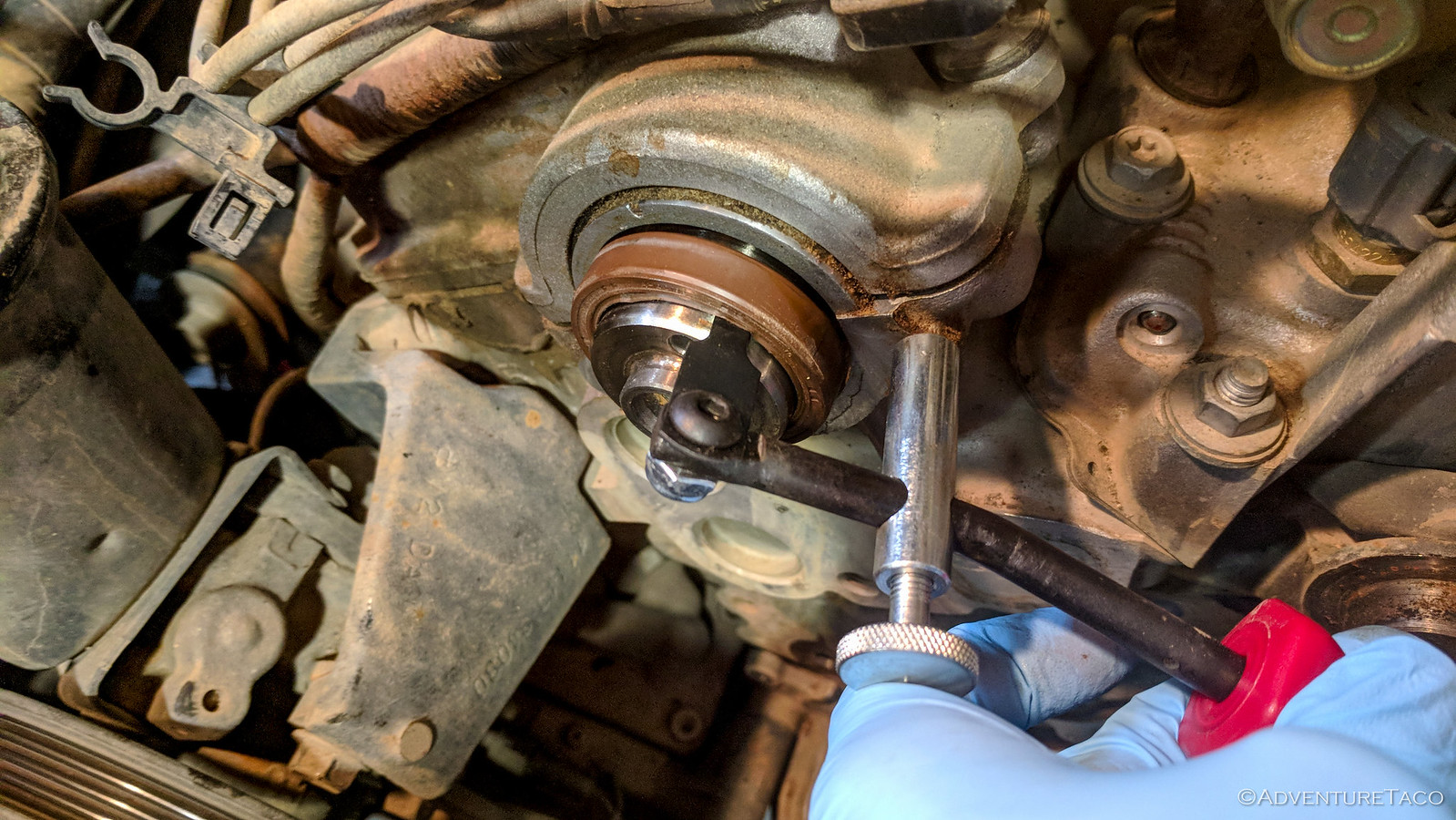

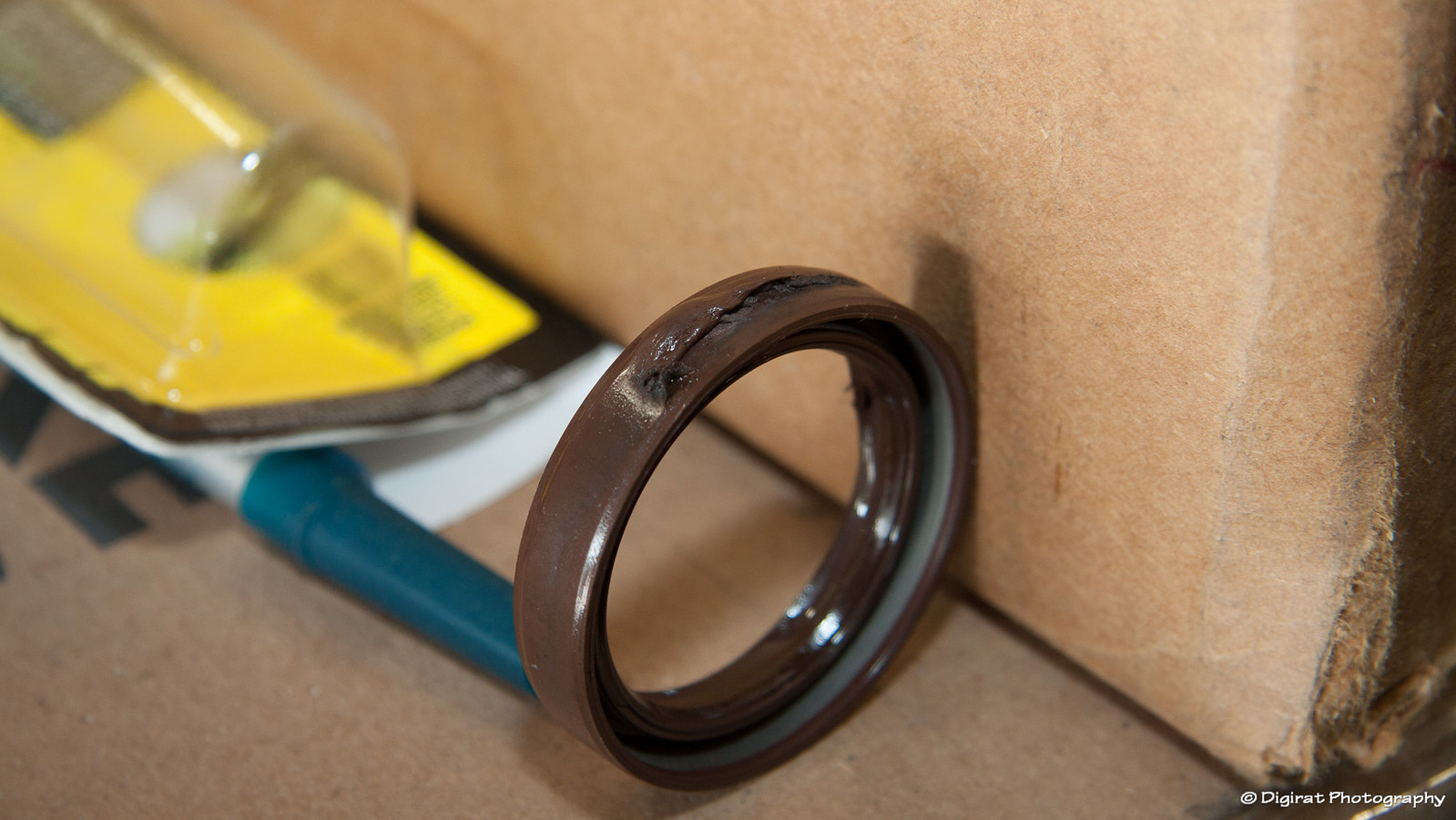

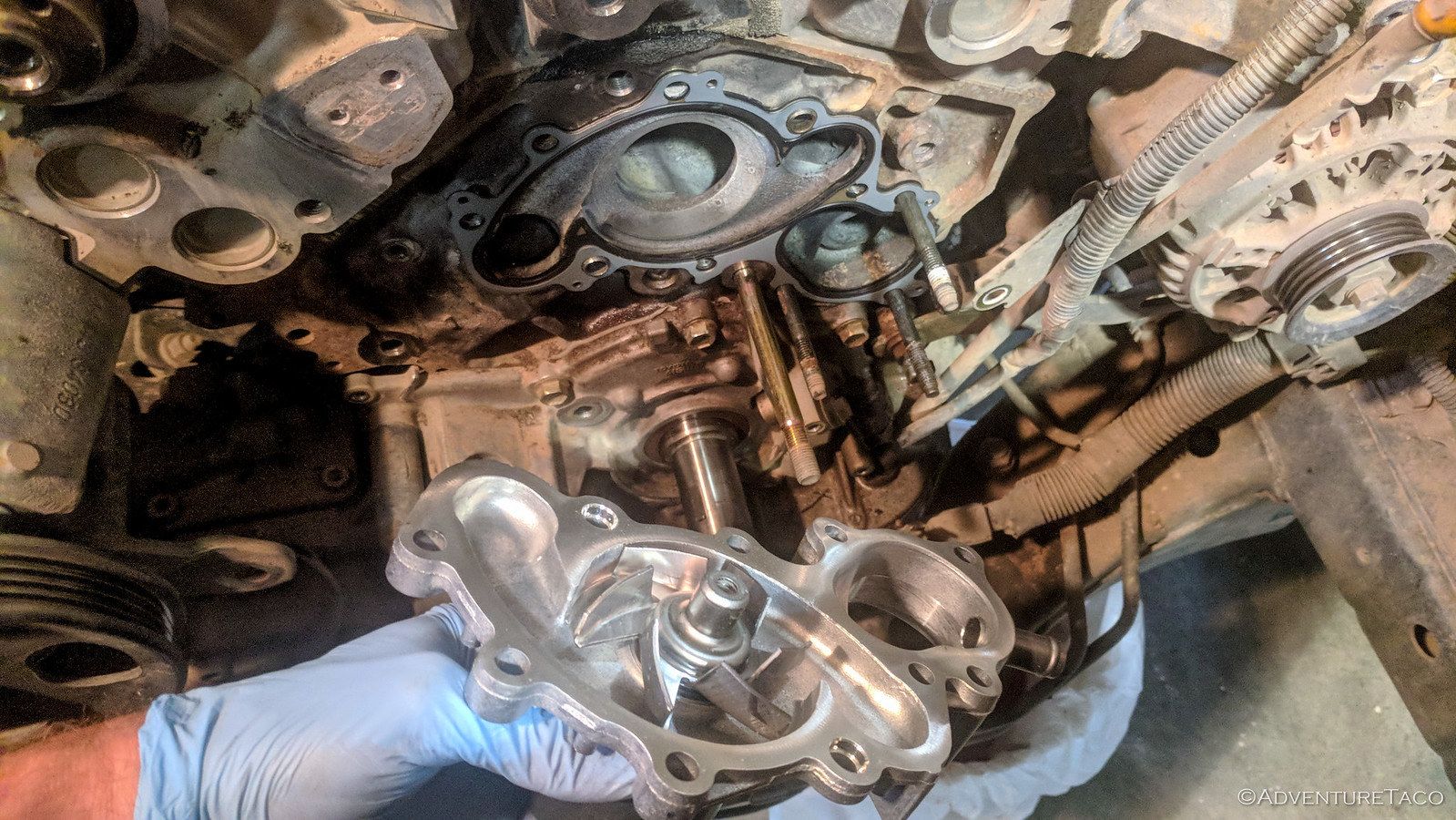
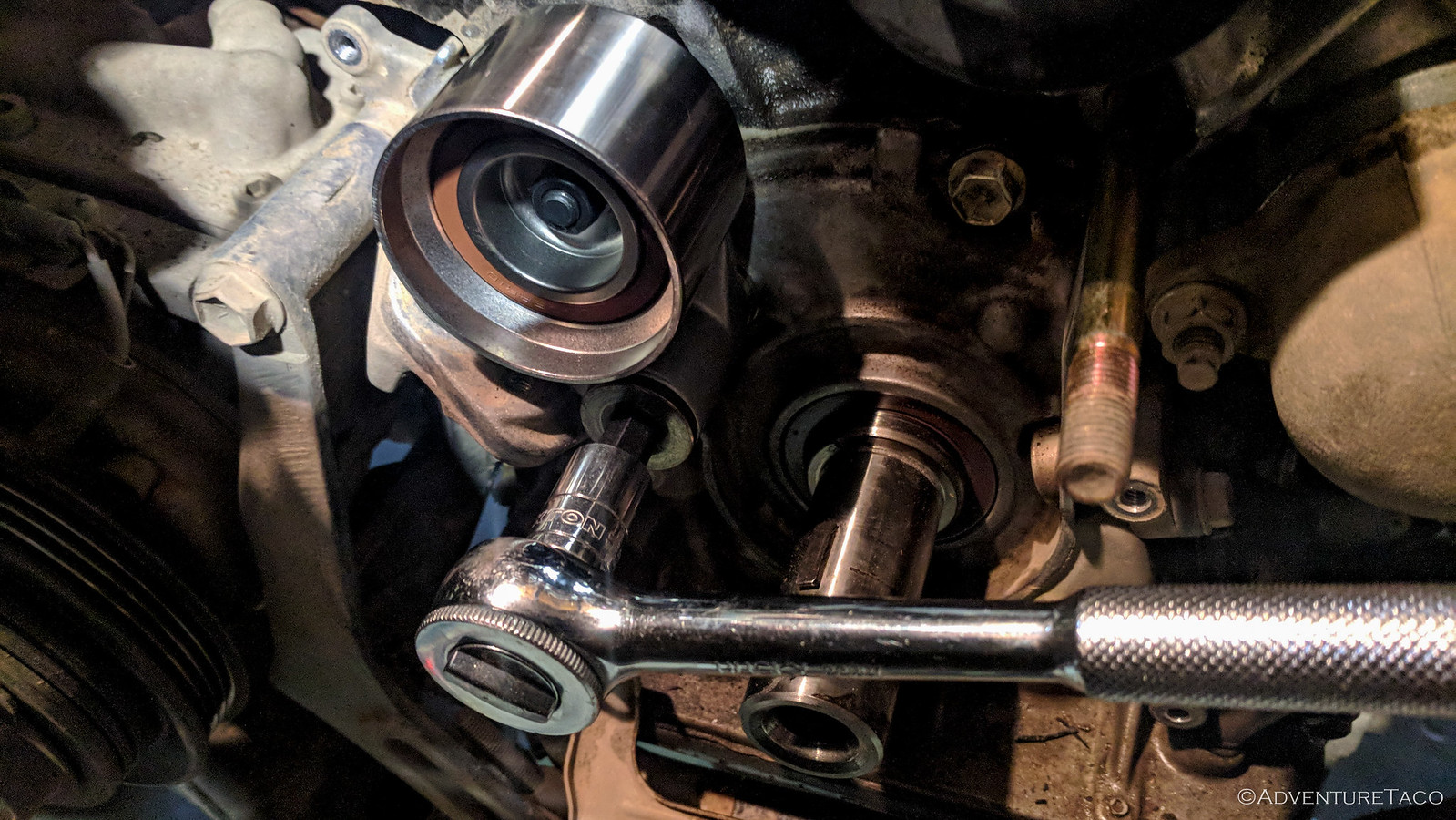

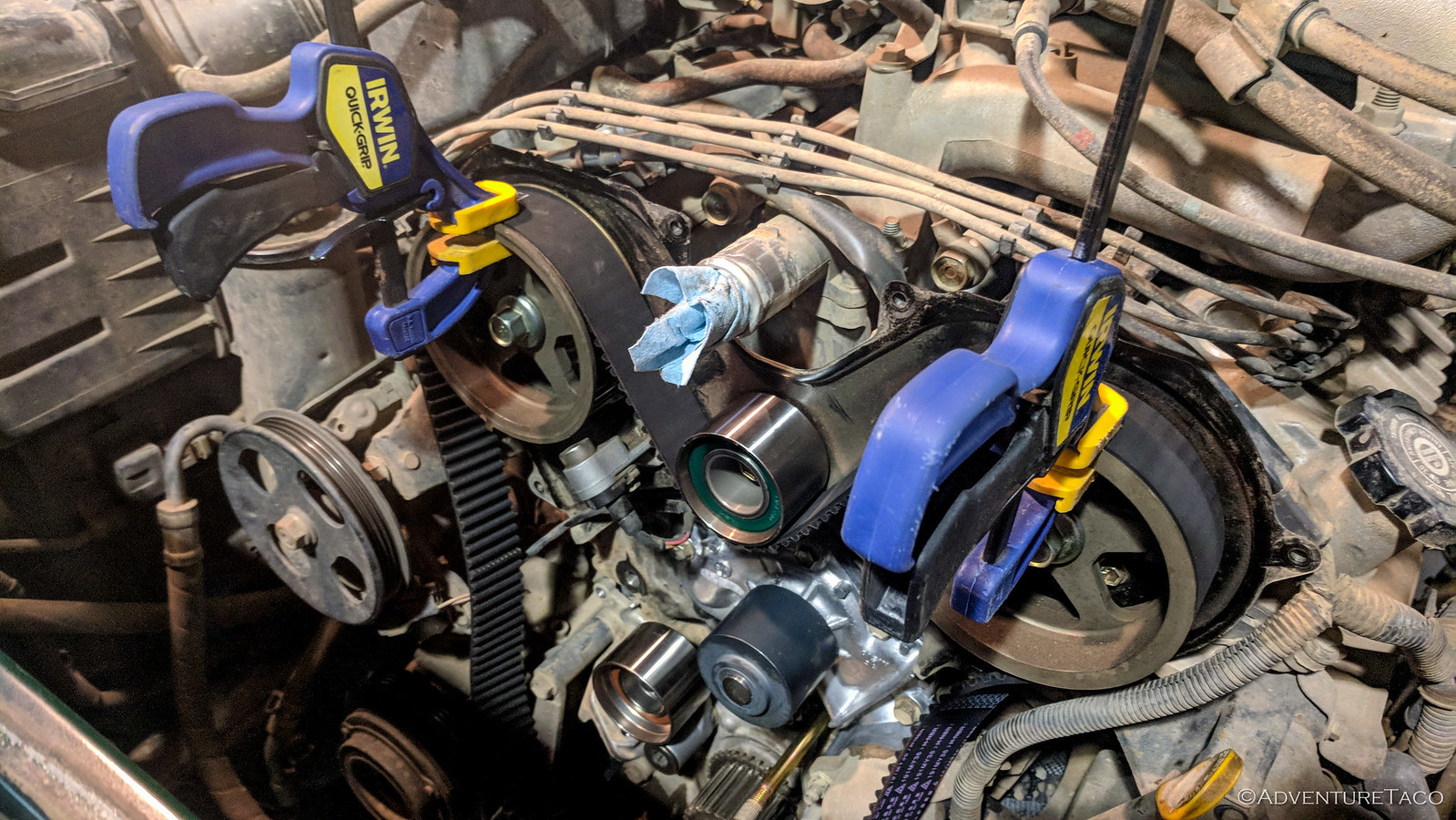
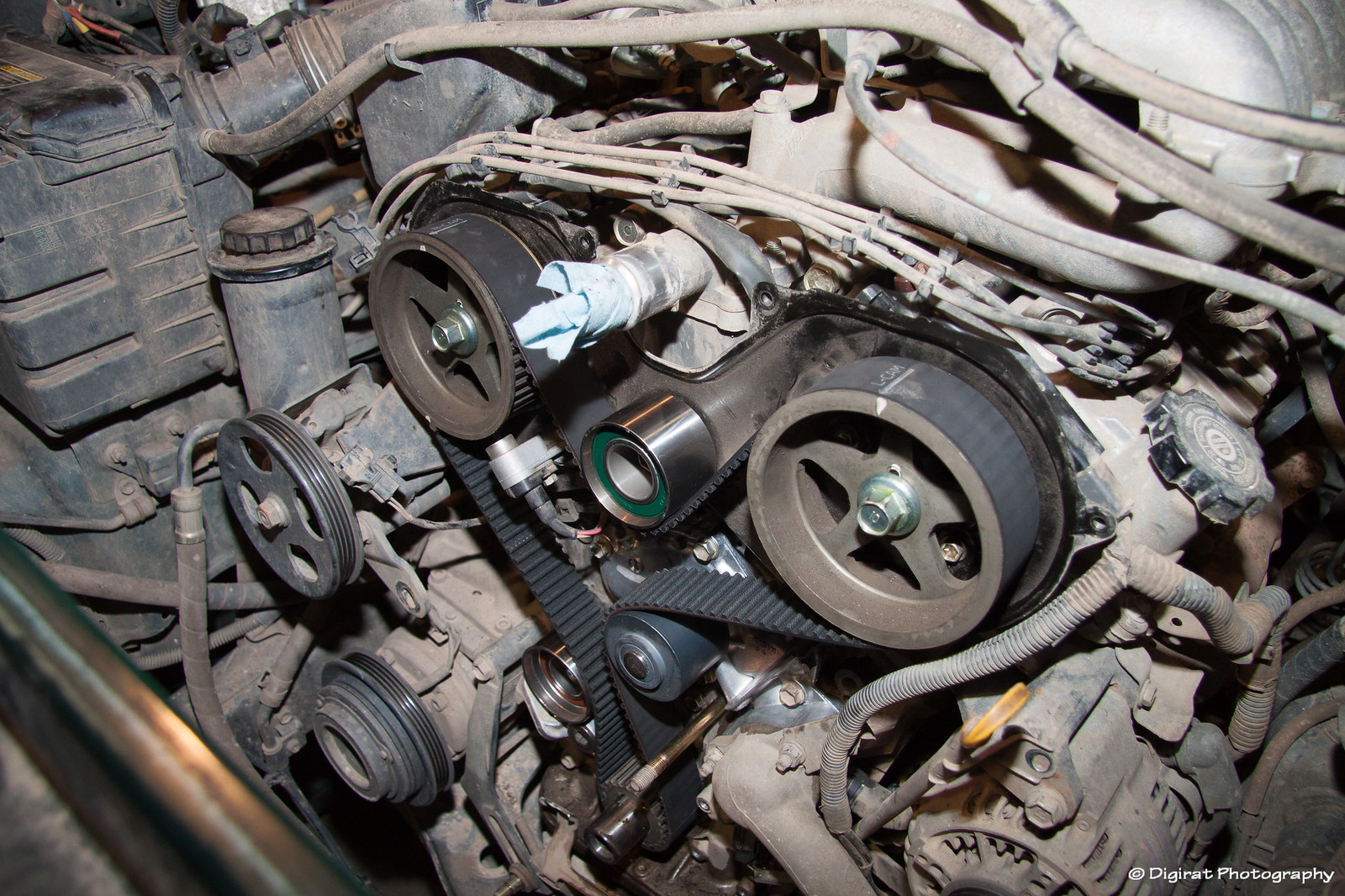
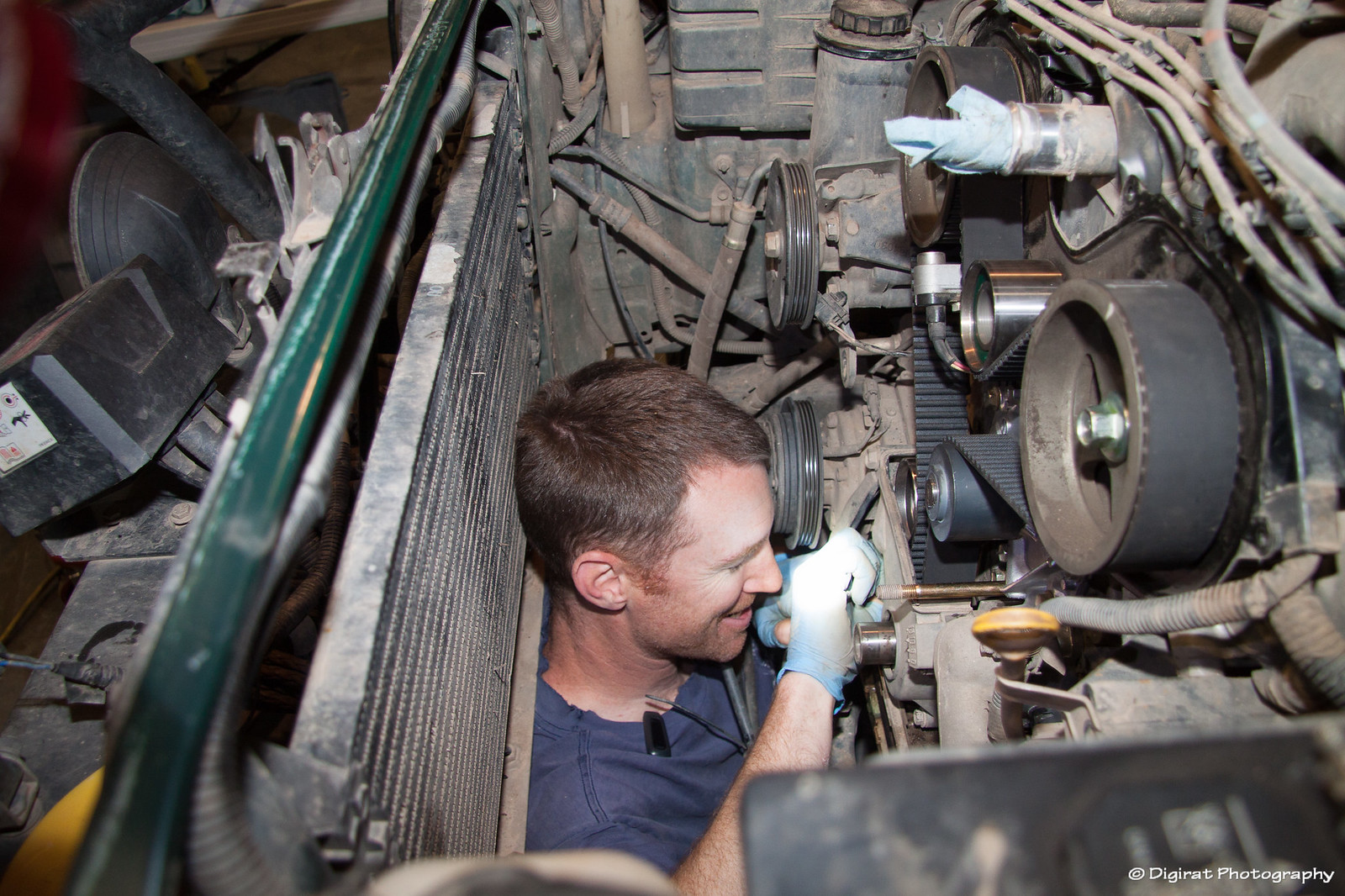
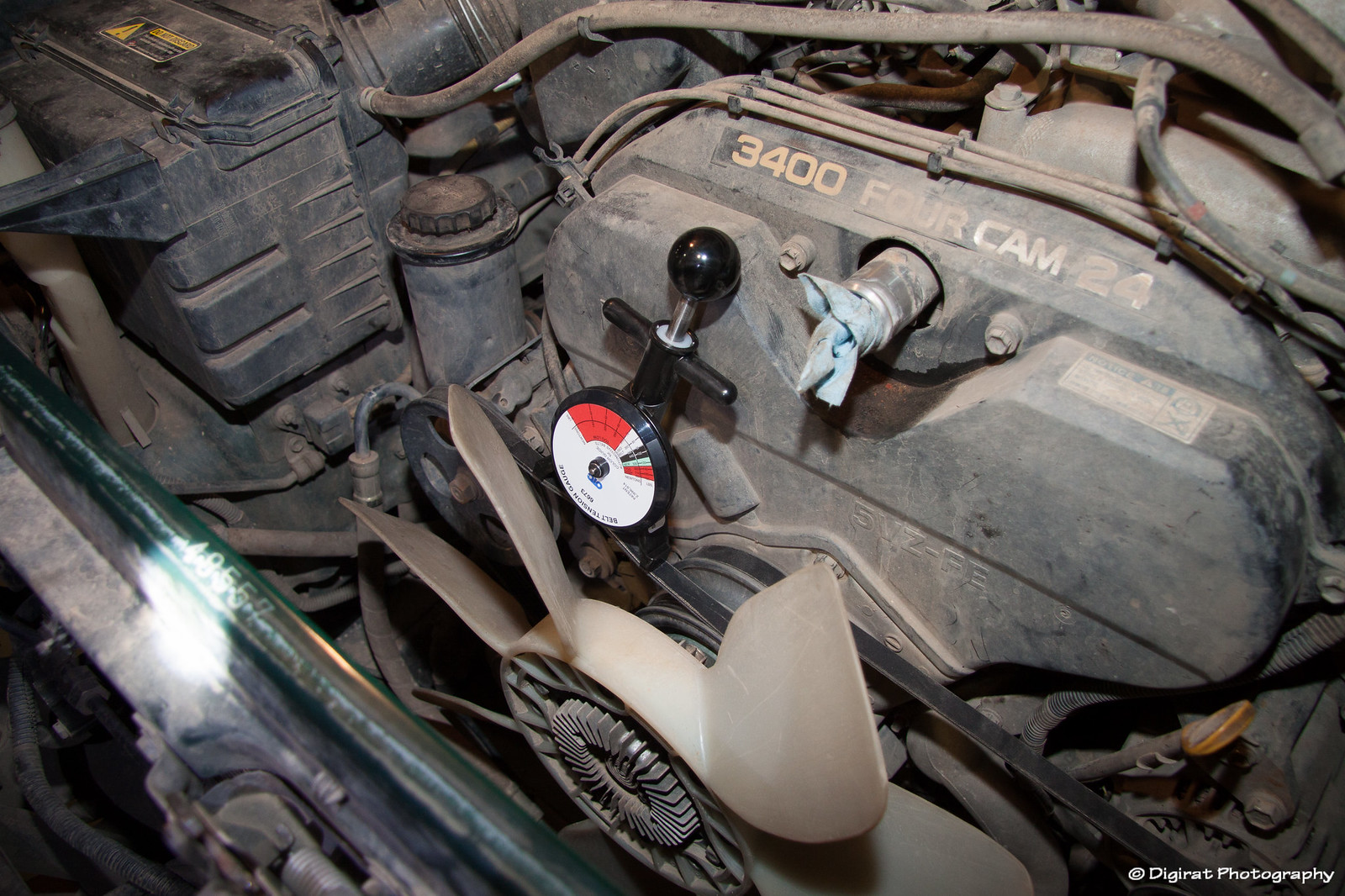
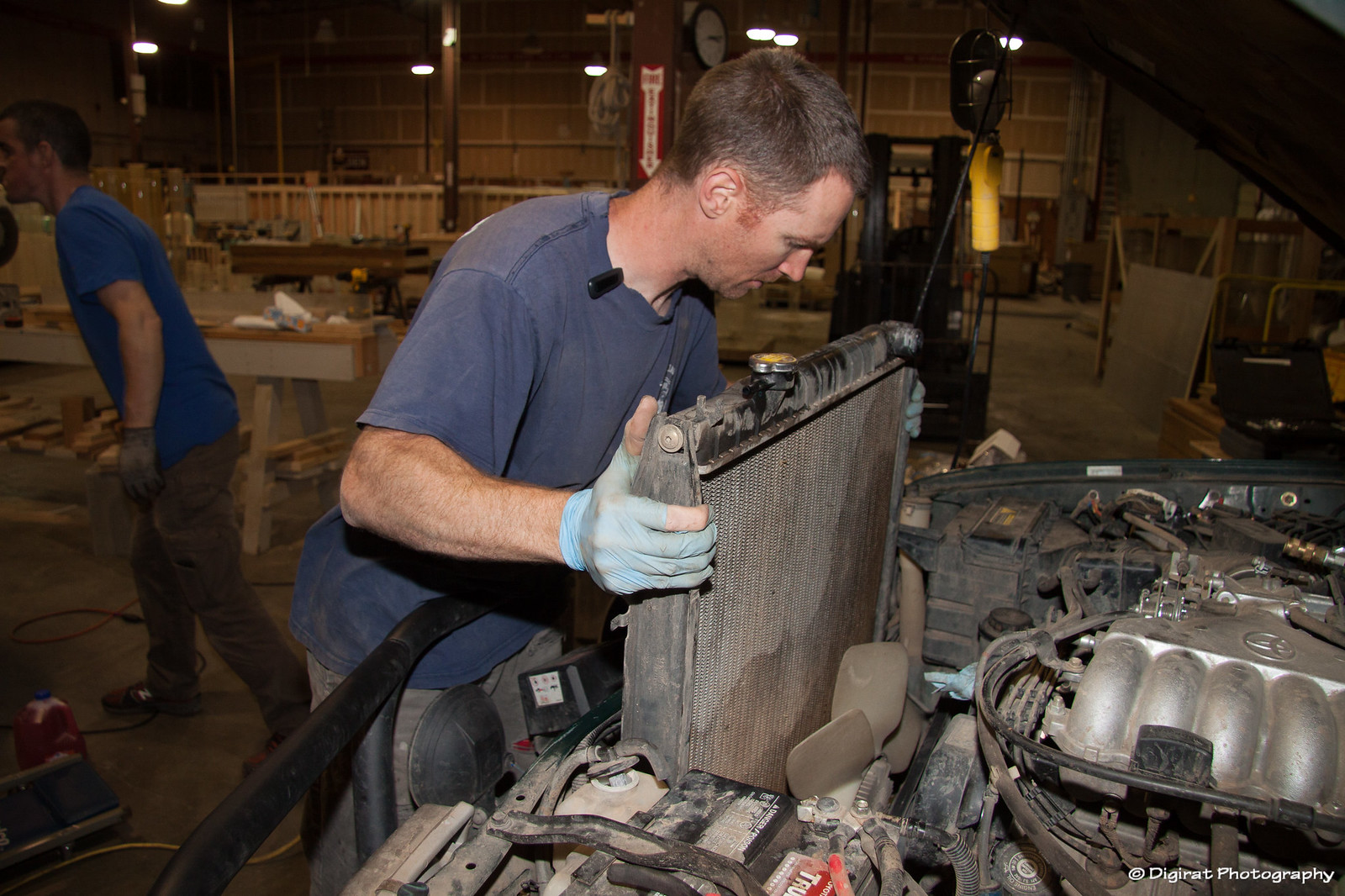

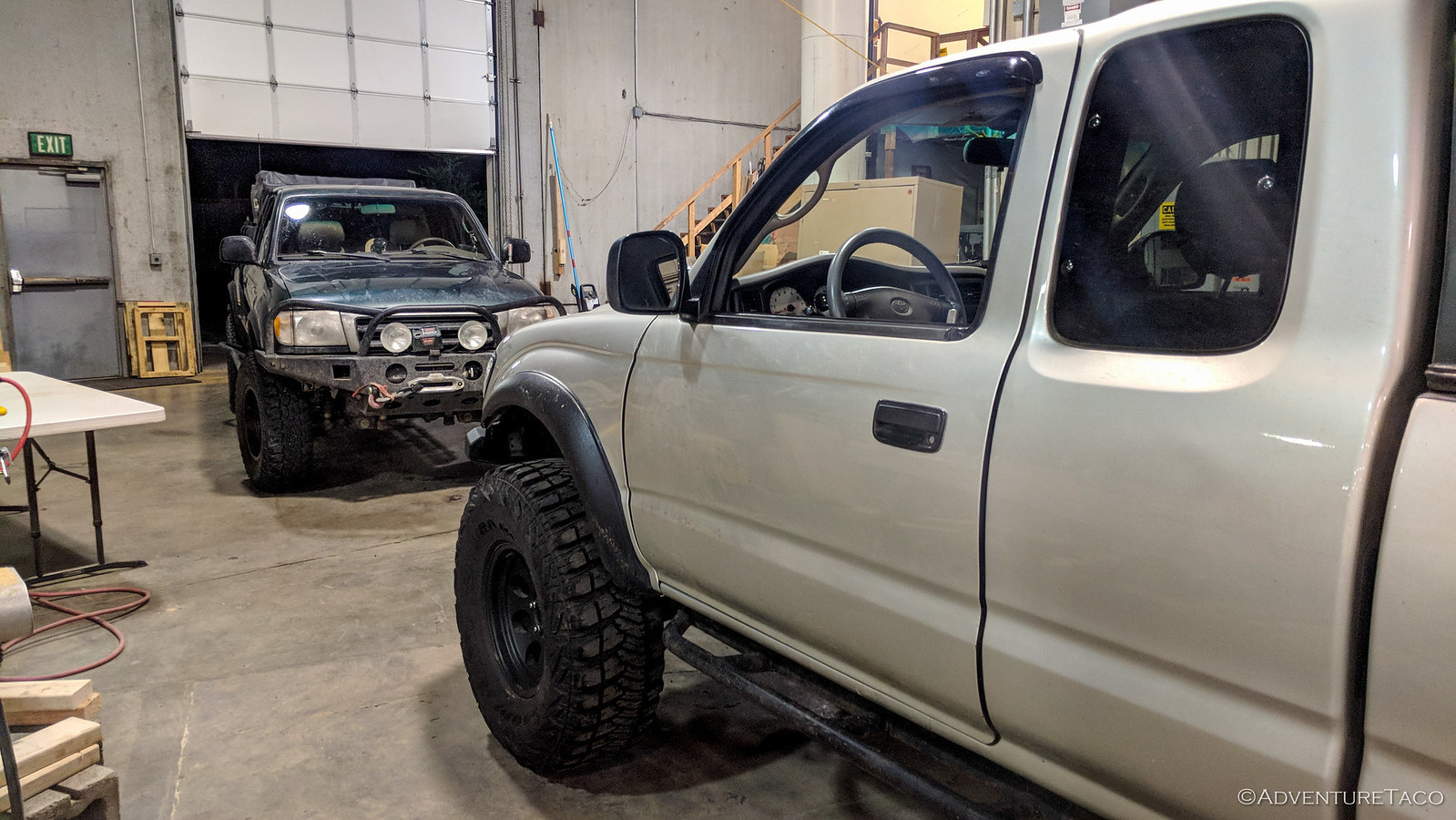
Wow...impressive! UJ
I cannot believe you did this. You are crazy.
Amazing story! Your solution for installing the last seal was ingenious! My favorite pic was of you inside the engine bay. Bravo! Great job!
Thanks! Was quite a squeeze in there, definitely photo worthy ?.
What was wrong with the seal? Something amiss with where it seats in the head? Im wondering how far the crank sticks out of the block down there? Approximately of course. I bought a tool but my gut is tellin me its too short
Hi Tony, I don't recall exactly how far the crank sticks out of the block. Three to four inches perhaps? It's been a few years now, so the best I have is this photo.
As far as the seal goes, it's just a really tight fit, so trying to slide it in there was causing it to get caught on the metal lip of the cam race.
Let me know if you've got more questions!
Dan, my 97 tacoma sr5 that I have had since day 1 at 24 yrs this month finally broke on the road, the middle part of the crankshaft pulley just fell out into the fan blade at a sudden stop! I thought the noise that had been going on for over a year was the clutch bearing wearing out!
I had to buy a new black toyota crankshaft pulley for a bit over $400 from toyota of des moines at Grimes.
Now I am trying to figure it how to remove the old one that is missing the middle damper? That the SST would hook onto keep it from moving while untorqing that big bolt.
Do you have any suggestions on how I am to keep the pulley from turning!?
Thanks,
G. From the midWest
Hey Geoffrey, Here are a couple ideas I have:
Good luck! I bet that chain wrench will give you the grip you need. ?
If I need a new radiator is it worthwhile to just swap a new in at the same time per your steps? Is that recommended?
If you need a new radiator, this is the perfect time to do it Matt. You're already draining and pulling the old one, and then reinstalling and filling it with new coolant. No better time to replace a part than that! And yep, you'd just follow these same steps, nonchalantly swapping the new radiator for the old one before reinstallation. ?
Cheers! Dan